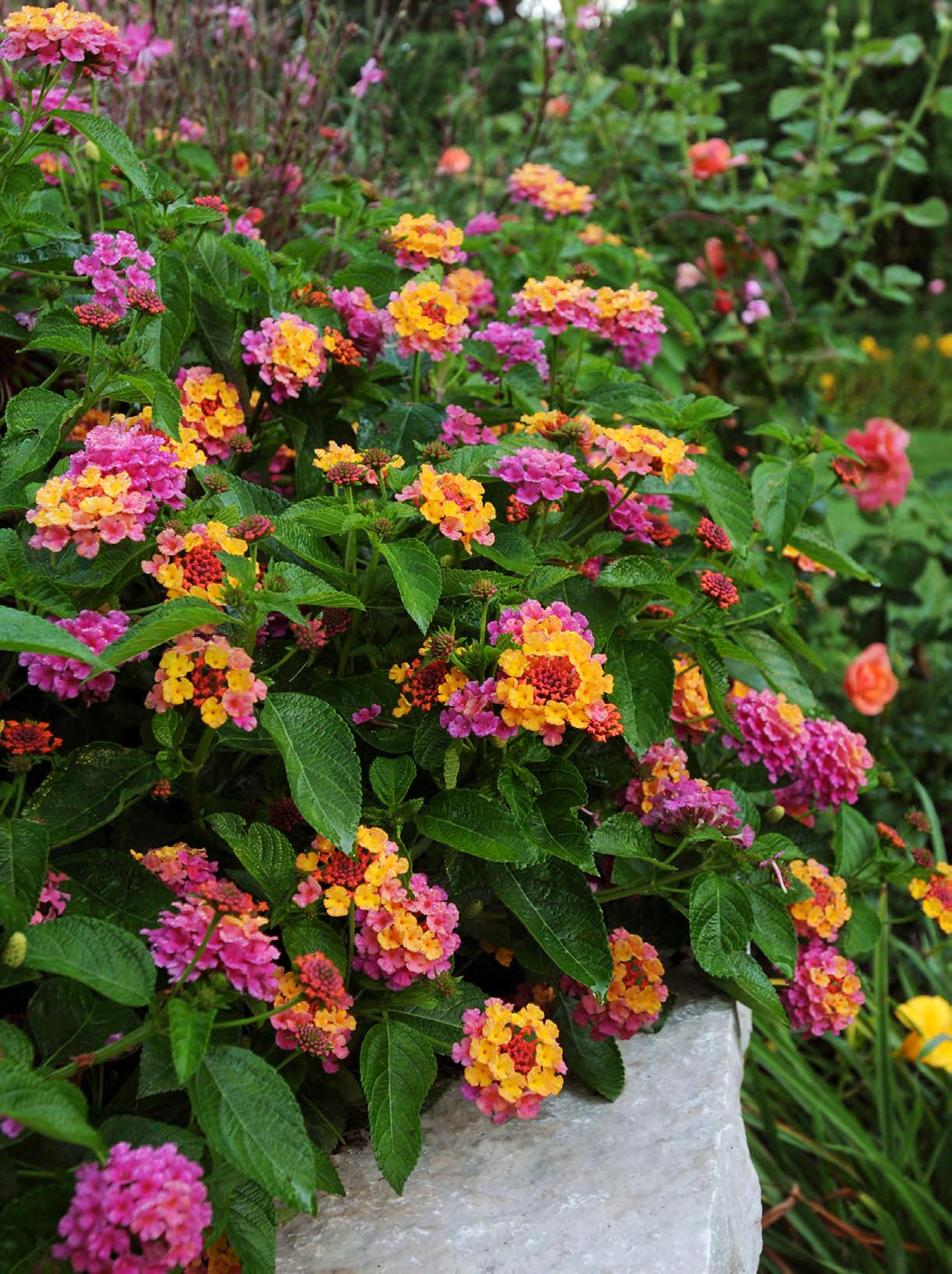
SHOWY ANNUALS | MAGICAL SUCCULENTS | GARDEN TOUR TIPS SUMMER 2023 • VOL 53
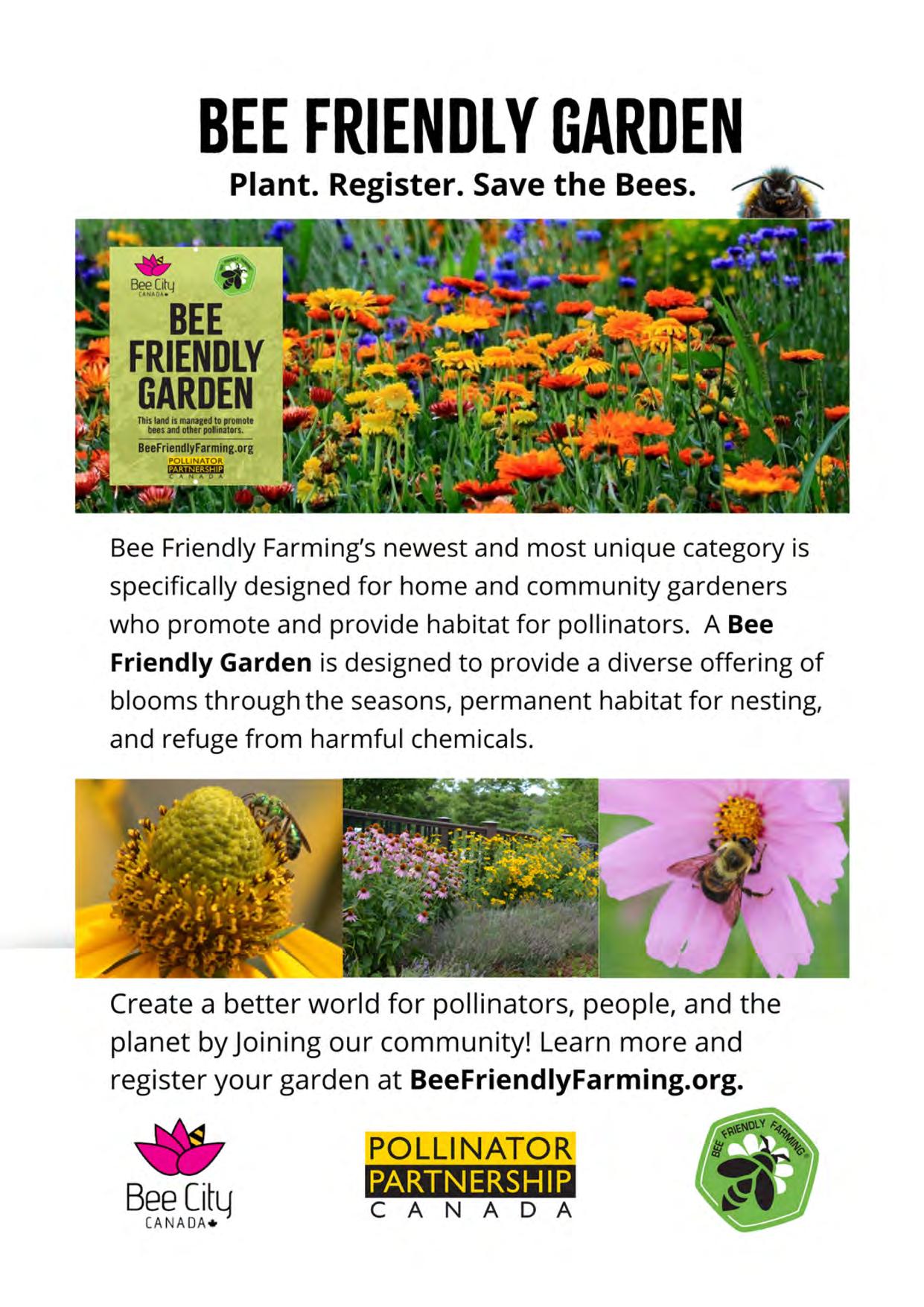
[4] FROM THE GARDEN
Being of and for the people—A dynamic community hub
[5] CONTEST ALERT!
Visit the Seven Wonders of the Garden
[6] WHAT’S ON 2023 AT A GLANCE
[7] VOLUNTEERS
Garden is a second home for Sara Farkell
[8] OUR NEW STAFF MEMBERS
[9] RIVERDALE Through the Garden Gate 2023
[10] TERRARIUMS Tiny gardens in glass enclosures
[11] THE IDEAL GARDEN TOURIST Tips for enjoying, learning from & surviving a local garden tour
[14] HISTORY OF GARDENING
Gertrude Jekyll combined horticulture and art
[17] FROM THE PAST Weston Family Library’s historical collection
[18] LEARN Programs focus on climate change resilience
Sheds of all kinds bring joy to gardeners. Page 29
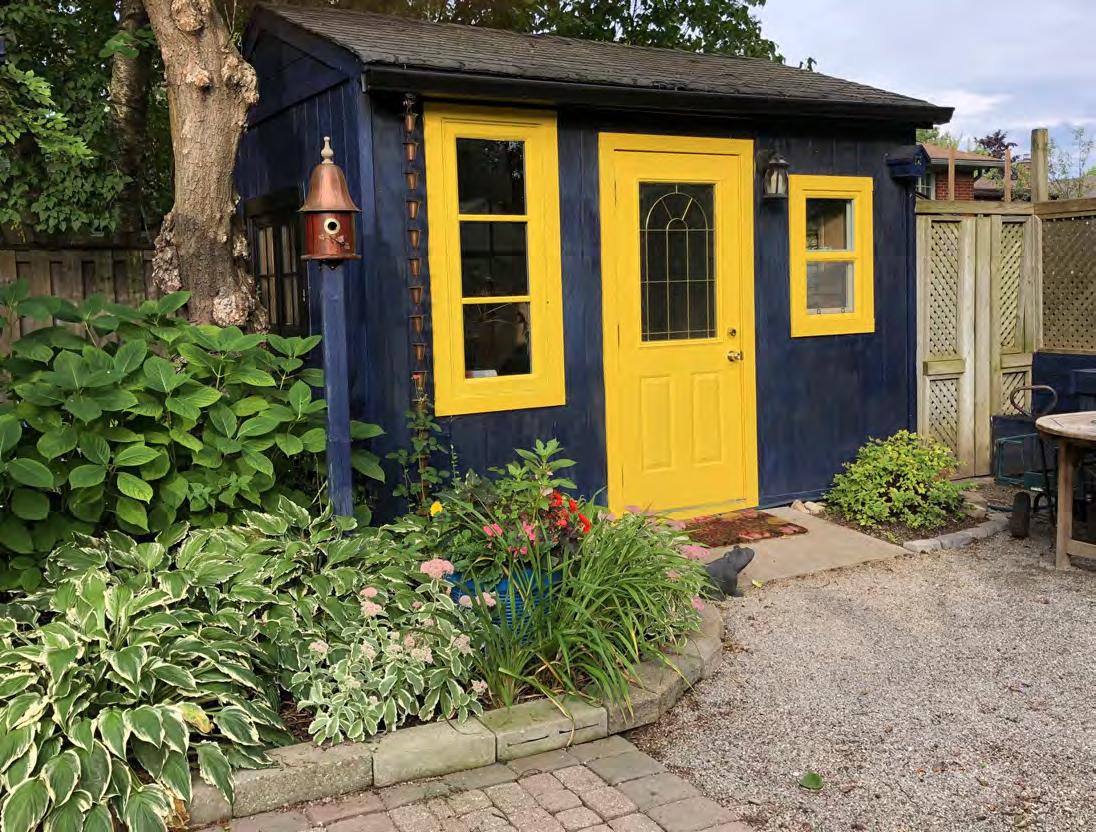
[20] MINDFULNESS IN NATURE 30 minutes a day keeps the doctor away
[22] INSPIRING CONCEPTS
Trial Gardens overflow with colour & contrasts
[26] MAGICAL SUCCULENTS Ideal for new (or seasoned) gardeners
[29] PERFECT GARDEN
SHED ‘Happy Place’ for storing tools & propagating plants
[32] POEM The geese atop the garden shed
[34] BALCONY
CHALLENGE Don’t let a lack of gardening space limit you
[36] BOOK SHELF
Three approaches to growing fabulous flowers
[38] GOOD THINGS ARE HAPPENING Lots going on at the Garden
[41] HOUSEPLANT PROFILE
Hibiscus, flamboyant
Queen of the Tropics
[42] MOSQUITO
REPELLENT DIY with essential oils & witch hazel
TORONTOBOTANICALGARDEN.CA 3 SUMMER 2023
22 inside SUMMER 2023 • VOL 53
COVER PHOTO: LANDMARK SUNRISE ROSE LANTANA, BALL FLORAPLANT. SEE INSPIRING CONCEPTS, PAGE
FROM the Garden
BEING OF AND FOR THE PEOPLE—A DYNAMIC COMMUNITY HUB
SPRING HAS SPRUNG and summer is in view, and the same is true for the Toronto Botanical Garden which is emerging as a dynamic community hub. The first half of 2023 has provided abundant opportunities for the Garden to be the convener and meeting place for its community. Whether you are a lifelong gardener, plant curious, or here to enjoy a bit of nature in the centre of the city—Toronto Botanical Garden has something for you.
Our TBG team has been focused on what brings each of us to work every day—and over and over again I hear it is about the people, the productive collaborations that take place at the Garden, and the opportunity to learn. But moreover, it is about the community that is uniquely Toronto Botanical Garden. To each of you—our members and supporters—we are grateful that you are part of this sanctuary and vibrant meeting place.
As we step into summer, the TBG extends an open invitation for more people to discover the Garden and join our community. What better way to invite the community in, than by embracing Toronto’s outstanding residential gardeners, as we showcase beautiful private gardens in the Riverdale neighbourhood with the 34th annual Through the Garden Gate tour the weekend of June 10 and 11. And that’s just the beginning. The Farmers Market returns on Thursday evenings from May 11 through October 5. You can visit the market and then stay for some music and meet fellow community members at the Edwards Summer Music Series at 7 p.m. from July 13 through August 31. Don’t miss the return of Bloom: Circus + Dance in the Garden this July and watch for more partnerships with
Toronto artists launching throughout the summer and fall.
Beyond the festive elements of the Garden, we will continue to deliver engaging opportunities for lifelong learning, inviting summer campers to unearth new skills, families to make memories together and adult learners to take their knowledge and appreciation to the next level. Which reminds me, be sure to mark your calendar for the return of the Ravine Symposium on Friday, November 3. Our ravines are a vital source of climate refuge and the lungs of our city, and there is a lot to learn about them. They are incredible places to embrace your inner citizen scientist. In the meantime, check out our upcoming workshops as we partner with the Toronto and Region Conservation Authority to offer a series of summer and fall programs focusing on climate change resilience and action-oriented initiatives in which you can participate.
With the bounty of summer upon us, there will be many occasions to meet our ever-growing population. I look forward to hearing what brings you to Toronto Botanical Garden and how we can continue to welcome and celebrate our diverse community.
And, I also invite you to attend our Annual General Meeting on Tuesday, June 20, where you can join fellow members in celebrating the success of the past year and learn more about the future we are co-creating.
All the best,
Stephanie Jutila Executive Director

TORONTOBOTANICALGARDEN.CA 4 SUMMER 2023
PHOTO: ARTHUR MOLA
CONTEST ALERT!
Visit the SEVEN WONDERS of the GARDEN
WE LOOK FORWARD TO SEEING EVERYONE THIS SPRING & SUMMER
THE RULES OF THE GAME ARE SIMPLE:
• Take a photo of any of the Seven Wonders of the Garden.
• Post your photo on social media.
• Tag Toronto Botanical Garden and use #7WondersOfTBG on each photo submission.
TORONTO BOTANICAL GARDEN Is excited to announce a members-only spring-summer contest to get you moving through our beautiful urban green space. And, yes, we know what you’re thinking…only seven wonders?! How could that possibly be when the entire garden is special and worth visiting? Well, we aren’t stopping you from peeking at anything else, but rather, encouraging you to visit these new and exciting spots!
NOW, FOR THE BEST PART…THE PRIZE!
Every TBG member who submits an eligible photo will be entered to win a ticket to one of our upcoming events. Three prizes will be available.
SEVEN WONDERS OF THE GARDEN
1. Dawn Redwood Tree
HINT: It is near the Teaching Garden.
2. Amur Maackia, Magnolia, Persian Ironwood.
HINT: They are all in the Courtyards.
3. Pollinator Garden
4. Nature’s Garden (an exciting place to see biodiversity and birds!)
5. Trial Garden
6. Spiral Mound
7. Find a vegetable that’s planted in the Garden
HINT: They can be found in multiple places.
P.S. Entry to exclusive contests is only one of many perks that members enjoy. Visit https://torontobotanicalgarden.ca/development/become-a-member/ to learn all about the member benefits or email membership@torontobotanicalgarden.ca to become a member of the Garden we all love today!
|| The contest is only open to TBG members and ends on August 31, 2023. Winners will be announced in September. ||

Farmers Market at the Garden
May 11 through October 5
Thursdays from 3 to 7 p.m. in partnership with Appletree Markets
Weekly Guided Tours of the Garden

May through October, dates & times vary Pre-registration is required.
Through the Garden Gate: Riverdale
This annual tour will highlight 15 beautiful private gardens in east-end Toronto.
June 10 and 11, 11 a.m. to 4 p.m.
One Day - Public $45, Members $40
Two Day - Public $70, Members $65
Pollinator Week
June 19 through 25
Toronto Botanical Garden Annual General Meeting

Tuesday, June 20, 6 p.m.
TBG members only
TBGKids Summer Nature Camps
July and August
New themes each week.
WHAT'S ON 2023 AT A GLANCE
Edwards Summer Music Series
July 13 through August 31
Thursdays at 7 p.m.
FREE Admission
Generously supported by the Edwards Charitable Foundation
July 13, Mimi O’Bonsawin
July 20, Ashara
July 27, VC2
Aug 3, Shuffle Demons
Aug 10, Quisha Wint
Aug 17, Adis Rodriguez & Havana
Aug 24, Lemon Trubac
Aug 31, Billy Newton-Davis
Bloom: Dance + Circus in the Garden
An immersive outdoor performance throughout the garden.
July 10 to 12, 16, 18, 19, 2 p.m. and 7 p.m. Public $55, Members $50
Nuit Blanche at the Garden
Toronto’s popular all-night art celebration. September 23 to 24, 7 p.m. to 7 a.m.
Holiday Market
Eco-minded, nature-inspired, relaxed shopping experience with over 100 local vendors, workshops, live music, and more.
First weekend: November 24 to 26
Second weekend: December 15 to 17
FREE Admission
in partnership with For the Love of Markets
torontobotanicalgarden.ca/event
FOR A FULL LIST OF UPCOMING PROGRAMS AND EVENTS
VISIT
TorontoBotanicalGarden @TBG_Canada #TorontoBotanicalGarden
photo credit: Lisa Yan
THE GARDEN IS A SECOND HOME FOR SARA FARKELL
By Aleeshia Carman Grant Writer & Development Coordinator
In the centre of the busy city lies the Toronto Botanical Garden, a much-needed escape from the hustle and bustle of city life. For Sara Farkell, a long-time volunteer and member, our Garden is a second home, a place where she can reconnect with nature and nurture her love for gardening.

Growing up in a family of gardeners, Sara was naturally drawn to the world of plants and flowers. When she moved to Toronto a decade ago, she was delighted to discover the TBG, a space which fosters her passion for gardening and connection to nature. “Being able to find a space like this in a city that I am not from was very important to me,” Sara says.
Over the years, Sara has become a regular visitor to the TBG, enjoying its beauty and events like the summer concerts and birdwatching. “I love walking around and
taking things in through the different seasons,” she says. “It’s peaceful and it’s quiet. There’s so much benefit to being in a space dedicated to nature. You forget that you are in a big city. The TBG is a reminder that we’re a part of something bigger.”
Not only does Sara believe in our beautiful space, but she’s thankful for the community she’s built among the Weston Family Library volunteers. “It’s nice being part of a team that loves both plants and books,” she says.
Like others involved with the Garden, Sara’s contribution as a member and volunteer is invaluable. As the city continues to grow and change, places like the TBG serve as a reminder of the importance of nature and the need for spaces that allow us to connect with it. “It’s important to contribute to spaces where people want to visit,” she says. “To spaces that make life more meaningful.”
VOLUNTEERS
TORONTOBOTANICALGARDEN.CA 7 SUMMER 2023
ROBIN RAKOWSKY



OUR NEW STAFF MEM BERS
TORONTOBOTANICALGARDEN.CA 8 SUMMER 2023
ROBIN GRANADOS
SAMUEL GROBISEN
ROBIN RAKOWSKY, TBG’s new Manager of Library Services, has a Master of Information Studies from the University of Toronto. She has extensive experience in school, special and public libraries. Having worked with both adult and student volunteers, she understands the critical role our volunteer community has in the success of the Weston Family Library and attaining the TBG mission. She has also worked in marketing and editing.
Robin will support the TBG mission by leading the Weston Family Library, promoting opportunities for learning and supporting our volunteers. Robin will also be working on how to best engage our members and community in learning opportunities in the library as well as developing new and unique programs to help us continue to reach new and diverse communities.
She has a Professional Floral Design Certificate from Seneca College and has worked professionally as a florist!
◗ ROBIN GRANADOS, Financial Consultant, is an accomplished finance and business manager with a background in various public, private and not-for-profit organizations. She is also a certified Brain Based Coach helping her facilitate positive change in people by improving thinking. Robin is committed to guiding executive leadership teams, has a proven track record of building collaborative cultures, developing exceptional teams and streamlining effective processes to achieve business goals and objectives.
Robin is an enthusiastic problem-solver, strategic planner and process improvement leader who guides organizations through effective decision-making. As she says, being a CPA is much more than crunching numbers.
Robin’s skill set will be valuable as we work to update our systems and get our financial reporting calibrated.
◗ SAMUEL GROBISEN, our new Facility Operations Manager, will support and partner with team members who deliver mission-driven programming, positive guest experiences and the day-to-day administration, while assuring that the facility is best positioned to be an inspiring plant place, an engaging learning environment and a dynamic community hub. The Facility Operations Manager is primarily responsible for the care and cleanliness of our active public facility and for ensuring that the needs of its user groups are met.
Samuel brings a diverse set of skills ranging from building management to culinary operations and banquet management. He led the daily management of a broad range of buildings including IBM Headquarters, Provincial Service sites, TD Centre, RBC Centre, Maple Leaf Square, ICE Condos, Simcoe Place, along with associated retail. Beyond building management, Samuel also served as the Culinary Operations Manager for three seasons at Rogers Centre/ Skydome and as a Banquet Manager for Marriott Hotels.
A long-time visitor to TBG, Samuel is an avid flower buyer and won an award for his condo balcony planting last year. He is also a Le Cordon Bleu trained pastry chef and a classically trained pianist.
Riverdale
Here We Come! Through the Garden Gate Tour 2023
BE SURE TO MARK your calendar for the weekend of Saturday and Sunday, June 10 and 11, 2023, from 11 a.m. to 4 p.m. This year’s Through the Garden Gate tour of beautiful private gardens will take place in the east-end Toronto neighbourhood of Riverdale that is known for its diverse community, abundant dining choices, quaint Victorian homes and some wonderful gardeners.

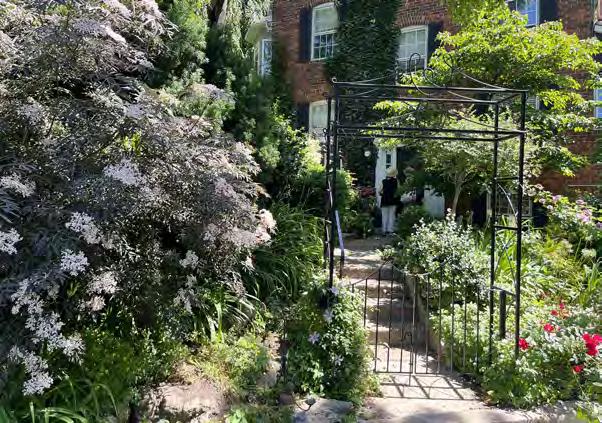
Riverdale Park is one of the largest green spaces in the city. It is also an area that features an abundance of parkland making it a welcome escape from the hustle and bustle of big-city living.
You’ll visit more than 15 residential gardens, of varying sizes and themes where every garden offers a unique perspective. From a small jam-packed garden in the Bain Co-op area where the owner focuses on sustainability and attracting pollinators to much larger gardens with luscious spaces full of ideas to take home. There’s something to spark inspiration for every visitor. Discover each garden at your own pace with a map and a guide that describes the features of each garden.
A complimentary shuttle bus service allows you to “hop on and hop off” along the route, although it is very “walkable” for those who like to move on foot.
“Back by popular demand, there will be live music in two of the gardens. Knowledgeable Toronto Master Gardeners will be in each garden, ready to answer any of your plant or garden questions.”
Withrow Park is a central hub and meeting place and the site of a popular Saturday farmers market. Be sure to come early to visit the market on Saturday and make a day of it by lingering after the tour to shop or dine at one of the local restaurants in the Danforth Village.
Advance tickets are available online. https:// torontobotanicalgarden.ca/enjoy/special-events/ through-the-garden-gate/
– Veronica Sliva
◗
THE TERM terrarium comes from the Latin word terra, meaning earth, and arium, meaning place. So, literally and quite fittingly translated as “earth place”. Also known as vivarium, Wardian case, or glass garden, terrariums are glass enclosures housing plants, terrestrial animals, or both. These miniature ecosystems have been around since the 1800s and have had a popular resurgence over the last few years.
But where did this idea come from? I am glad you asked! In 1842 an English Botanist named Dr. Nathaniel Bagshaw Ward discovered this concept accidentally when raising moth pupae in a glass case. He had built this little enclosed environment for the pupae containing ferns and moss. While analyzing the pupae, he noticed the plants were thriving in their new home. He then took this revelation, experimented further with it and published his findings in a scientific paper and a book. His observations revolutionized botany–and allowed scientists to understand and study plants and small land animals in tiny environments mirroring their own.
TER RARI UMS
Tiny gardens in glass enclosures foster creativity and encourage mindfulness
Now that I have answered the where, let us get to the why of the matter. Why all the hype? Why would the average person need or want a terrarium? It is not only for their aesthetic purposes, but for the opportunity for enthusiasts and beginners alike to experiment with their own miniature garden and a chance to get creative with design. They evoke a sense of curiosity and wonder, while promoting a
By Megan Blacquiere TBG Seasonal Horticulturist
feeling of calm and encouraging mindfulness. As a seasonal horticulturist at TBG, I myself have fallen for their charms. Over this past winter I made so many terrariums that I have run out of space and have started selling them in the Garden Shop.

Terrariums are relatively low maintenance which makes them especially appealing. As long as you choose the correct vessel and substrate for the plants there should be very little upkeep required. There is a wide variety of containers that can be used, from glass orbs, to vases, to cloches, and even simple mason jars. The selection of plants will determine the vessel best suited. For arid
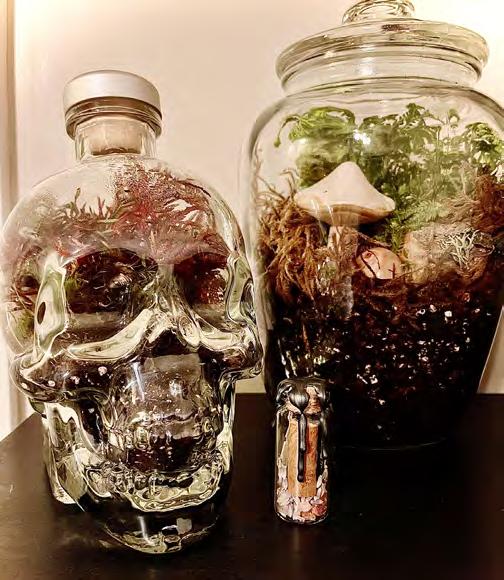
plants such as succulents and cacti you will want to use a more open container like an orb or shallow glass bowl. For a tropical terrarium it’s best to use something more enclosed such as a cloche, vase or glass cookie jar. Whatever your preference, there is endless opportunity to get creative and use your imagination. There are many reasons why terrariums are still so popular after all these years, and I hope this article has given you some insight. Why not get out there and see for yourself!
Stay tuned for the fall issue of Trellis, where I will provide a detailed do-it-yourself on terrariums. In the meantime, you can check out the terrariums I have created for sale in the TBG Garden Shop.
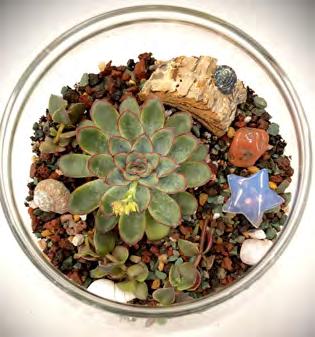
TORONTOBOTANICALGARDEN.CA 10 SUMMER 2023
PHOTOS: MEGAN BLACQUIERE
THE IDEAL GARDEN TOURIST
Tips for enjoying, learning from and surviving a local garden tour
By Veronica Sliva
EVERY GARDEN HAS a story to tell. When you open a garden gate it’s like starting a new book. You do so with anticipation, to discover and be inspired. If you find yourself feeling this way chances are you have the makings of a “garden tourist”.

It starts innocently enough. You admire the front gardens in your neighbourhood as you walk by. You can’t help sneaking a little peek into random backyards and wondering what’s behind the fence. Sooner or later you sign up for a garden tour and you have become a Garden Tourist.
WHY GO ON A GARDEN TOUR?
• Curiosity! We all have a little of the voyeur in us, don’t we?
• For a wellness break. It’s good for your well-being and calming to wander the grounds of a beautiful garden on a summer’s day. Doing so with a like-minded individual makes it even more special.
• To support a good cause. Garden tours are most often put on by organizations that raise funds for worthy causes.
• For inspiration and to get design ideas. Whether you have a lifetime of experience as a gardener or you are a novice, visiting gardens is sure to spark ideas that you can bring to your own space.
• Have you ever lusted after a plant and wondered whether or not it will do well in your garden? Seeing plants growing in a real garden rather than in a pot at the garden centre can help you to decide if you want to buy that plant. You can also learn about plants that are new to you or that you haven’t grown before.
• You may see your favourite plants used in new ways in different settings and go home and look at your own garden with fresh eyes.
• Solutions for solving problems. Garden tour organizers strive to include a variety of kinds of gardens. There are many lessons to be learned. Some gardens have challenging conditions such as deep shade, small spaces, eyesores that need a disguise, steep landscapes…the list goes on. You can see solutions for a variety of situations.
• If the homeowner is in the garden, having a chat is a great way to connect and share thoughts. Most gardeners love talking about their gardens and are generous in sharing information.
TIPS FOR GARDEN TOURISTS
Before the Tour When Purchasing
Tickets:
• Read the tour information carefully for details regarding age limits for children, tour hours and other details. For those with special needs find out in advance about accessibility (canes, walkers, wheelchairs etc.). Private gardens may not have adequate pathways for wheelchairs and strollers.
• When possible buy tickets in advance to save time (and sometimes money) and to avoid disappointment. Some tours limit the number of tickets to avoid overcrowding in the gardens.
• Find out about parking. You may need to park several blocks away
• Do a bit of exercise to get your legs in shape before you go. Typically garden tours involve several hours of on-your-feet time with lots of walking.
TIPS TO ENJOY A SUCCESSFUL DAY
• Check the forecast and dress for the weather. Garden tours go rain or shine so take a sun hat and your umbrella!
• Wear comfortable walking shoes. Leave those fashionable high heels at home!
• Bring water and easy-to-carry snacks or plan a stop for snacks and/or lunch.
• Take a notepad and pen or pencil.
• If you have a cell phone download a plant identification app. For example, Plantnet https://plantnet.org/en/ and inaturalist https://inaturalist.ca/
• If provided, review the map and/or descriptions of the gardens before heading out. Prioritize your “must sees” and then plan your route.
GARDEN ETIQUETTE
BE RESPECTFUL at all times. Remember you are a guest of the homeowner who has generously opened their private garden to you. Resist the urge to look in windows or “snoop” around. Most homeowners are happy for you to take photos of the garden but not the interior of their residence. There are a lot of “don’ts” in the list that follows, but mostly it is common sense. Gardeners are typically warm and friendly and love to have visitors enjoy their gardens. Greet them with the same enthusiasm and you are guaranteed a lovely visit!
• Don’t arrive before the tour begins.
• Don’t bring pets. Pets are usually not allowed. However, check to see if service dogs are acceptable.
• Don’t bring very young children unless they’re under your complete control at all times. Do not take strollers across lawns.
• Do not step in planted areas. Stay on pathways, lawns, decks or patios. You don’t want to trample any plants.
• Don’t pick flowers, pinch cuttings or take seeds. Instead, ask the owner where they purchased the plant so you can get some of your own. Sometimes a generous owner will offer you some seed or even a cutting, but don’t expect it.
• Leave the plants alone. Don’t pull what you think are weeds! What is a weed to you may not be to the homeowner. And don’t deadhead.
• Don’t remove plant labels.
• Don’t criticize the garden in front of the owner. To do so is rude. The garden may not be to your taste, but the beauty of creating a garden is making it unique. We all like different styles!
• Do say thank you and try and say something nice about the garden as you leave.
• Don’t show up right before closing time when garden hosts want to close the gate and put their feet up.
TORONTOBOTANICALGARDEN.CA 12 SUMMER 2023
PHOTO: PEXELS
WHERE TO FIND GARDEN TOURS

Search online for tour listings both near and far. Most tours run in early summer and fall. Here are a few places to start: Toronto Botanical Garden’s Through the Garden Gate Tour This self-guided walking tour showcases fabulous gardens in a different Toronto neighbourhood every year. This year’s tour highlights the Riverdale area (check out https:// torontobotanicalgarden.ca/event/through-thegarden-gate-riverdale/2023-06-10/ for details.
The Ontario Horticultural Association (OHA) is a volunteer charitable organization that encourages interest in gardening. Many of the member horticultural societies and garden clubs throughout Ontario offer annual tours. Check https://gardenontario.org/societylisting/ and https://gardenontario.org/events/ category/gardentour/ for individual club listings.
HISTORY OF GARDENING


Revolutionary landscape designer Gertrude Jekyll
combined horticulture and art
By Lee Robbins
William Morris Trellis wallpaper
GERTRUDE JEKYLL, one of the 20th century’s most important pioneering landscape designers, was an exemplar and champion of the Arts and Crafts Movement.


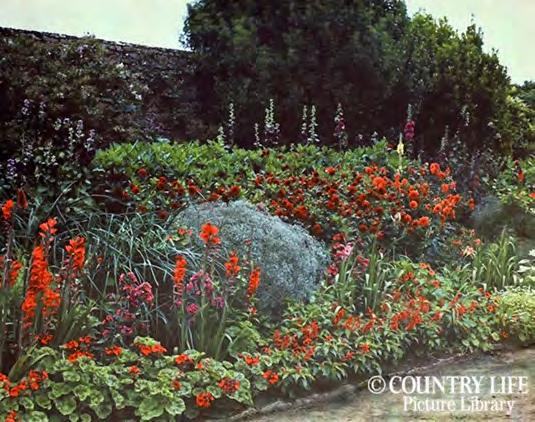
The Arts and Crafts Movement of the second half of the 19th century was a reaction against the formality and rigidity of the Victorian period and the impersonal mechanization brought about by the Industrial Revolution. The philosophical underpinnings of the movement, developed by John Ruskin (1819-1900), who promulgated the idea that nature and art should be expressed by people and not through mechanization, and movement founder William Morris (1834-1896), who promoted the value of individual craftsmanship and the beauty of nature, provided the foundational principles and ideals that influenced Jekyll and her garden designs.
Gertrude Jekyll (1843-1932) was a powerful influence in the English Arts and Crafts Movement, creating artful designs in gardens and landscaping. She was a prolific writer, authoring hundreds of articles and dozens of books on gardens and gardening. She promoted colour design theory in garden planning and published the book Colour Schemes for the Flower Garden (1908).
Her signature graceful garden paths were softened by naturalistic herbaceous borders in direct contrast to the very formal “carpet-bedding” schemes favoured in Victorian gardens, made popular during the Gardenesque style of the 1830s, where each plant was separated from the others with very clean edges for the beds and arranged geometrically to produce a tapestry effect.
Jekyll used mostly perennials rather than the annuals and tropical plants fashionable in extravagant Victorian
“bedding-out” designs which stressed exuberance of colour and exotic varieties that had to be replaced when their colour was spent.
Jekyll used her formal training as an artist to combine horticulture with art. She incorporated colour-theory and mixed plants and textures to achieve unique shades and contrasts producing lush and brilliant garden collages. Jekyll’s favoured approach was to compose a plant border that started with cool colours, moved to hot ones and then receded to the cooler ones again. Her use of large drifts of native hardy perennial plants in her garden designs was revolutionary. Her gardens were designed with plants carefully selected to bloom
TORONTOBOTANICALGARDEN.CA 15 SUMMER 2023
PHOTO: WILLIAM NICHOLSON, PUBLIC DOMAIN, VIA WIKIMEDIA COMMONS
The red section of Gertrude Jekyll’s garden at Munstead Wood, photographed in 1912. (Country Life Picture Library)
Hestercombe Gardens, Taunton, Somerset, UK. Designed by Sir Edward Lutyens and established in 1904-08.
Opposite Page: Gertrude Jekyll worked on more than 100 gardens with Sir Edwin Lutyens over 20 years. A witty cartoonist, Lutyens did several cartoons of her including this one, titled Bumps, his affectionate nickname for her.
Gertrude Jekyll
throughout the year, flowing from one season to the next: early spring to autumn.
Jekyll worked on more than 100 garden projects with Sir Edwin Lutyens (1869-1944), a famous and influential British architect. Their work was an Arts and Crafts blend where the design of the house and the garden were both considered as essential components, complementing and flowing into each other, rather than viewed as separate entities. One of their most well-known projects is Hestercombe, a garden near Taunton, Somerset, open to the public, known for its textures in stone and plantings.
Gertrude Jekyll was one of the 20th century’s most important British landscape designers and writers. She was a horticulturist, garden designer, photographer, writer and artist, a true “Renaissance Woman”. At her death, she had designed hundreds of gardens over a period of 40 years. Jekyll’s planting schemes and their harmonious colour palettes remain the quintessential essence of cottage garden style. Her gardens and writings are still a source of inspiration today.
From the Library
A few books from the Weston Family Library to give you more in-depth information about Gertrude Jekyll and the Arts and Crafts Movemwent are:
1. Richard Bisgrove: The Gardens of Gertrude Jekyll. Call No: SB 470.J45 Bis 1992
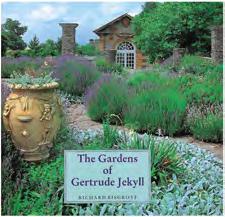
2. Judith B. Tankard: Gardens of the Arts and Crafts Movement Call No. SB 454.3.A76.Tan 2004


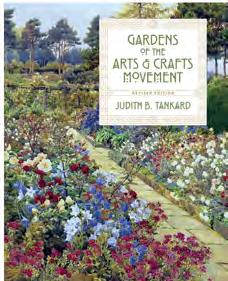
3. Judith B. Tankard: Gertrude Jekyll and the Country House Garden (from the Archives of Country Life) Call No. SB 470.J45 Tan 2011
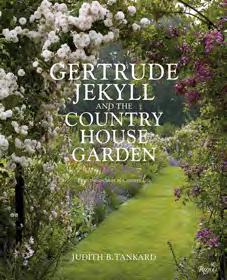
PHOTO: XXXXX XXXXXXX
TORONTOBOTANICALGARDEN.CA 16 SUMMER 2023
1 2 3
This is an original garden sketch by Gertrude Jekyll (UC Berkeley College of Environmental Design)
FROM THE PAST
Weston Family Library’s Historical Collection offers over 500 fascinating reads
 By Jean McCluskey
By Jean McCluskey
is an Aztec herbal manuscript and is considered America’s earliest medical book. It ended up in the Vatican Library where it was translated into Latin. This copy was taken from the original manuscript published in 1552.
Theophrastus (371-287 BC), a Greek philosopher, is called the father of botany and an English translation of his De Causis Plantarum is another treasured item.
How some of these books came to be in the Weston Family Library is a mystery, as we seldom know their provenance. For example, another treasure is one of Humphry Repton’s Red Books. Repton was a famous 18th century English landscape designer, who provided his clients with a description and sketches in his Red Books. This is one of the most valuable items in the whole of the library’s collection.

ALITTLE KNOWN but fascinating part of the Weston Family Library is the Historical Collection of over 500 books, folios, magazines and seed catalogues. More than 115 books were published more than 100 years ago.

Canadian items are a priority and while working in the collection I found several treasures such as Canadian Wild Flowers by Catherine Parr Traill. A keen botanist, she wrote in her later years when widowed, and needing funds. It was illustrated by her niece, Agnes Fitzgibbon.
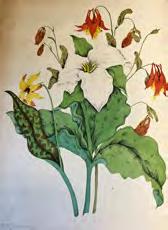


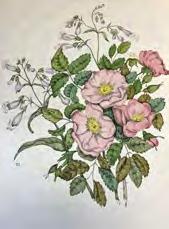
Although Canadian content is a priority, many items are from other countries. One of the oldest books that I have come across, dates from 1552. This is a facsimile of Badianus Manuscript which was bought in 1947 with a Special Memorial Fund. This is a valuable possession because it
Is the Historical Collection useful? Yes, indeed it is. For example, when one of the forts in the Niagara region wanted to plant a garden with herbs, flowers and shrubs of the period, they came to this library for information.
Some Ontario birds, such as the short-eared owl, are a threatened species. To compare the bird population of today with that of over a century ago, an ornithologist would find Canadian Birds and How to Study Them published in 1914, a useful reference.
How diverse are seed catalogues today compared with those more than 100 years ago? Ontario seed catalogues dating from 1875 and 1889 provide that information.
If you wish to see any of the books in the Historical Collection or seek information, please ask the library volunteer who will be happy to help you.
TORONTOBOTANICALGARDEN.CA 17 SUMMER 2023
PHOTOS: LORRAINE HUNTER
Above: Photo and covers from Humphry Repton’s Red Books. Below: Floral sketches by Agnes Fitzgibbon from Canadian Wild Flowers by Catherine Parr Traill.
TBGLEARNNEWS
Upcoming programs focus on Climate Change resilience and action-oriented initiatives

JOIN US AS we partner with the Toronto and Region Conservation Authority to offer a series of summer and fall programs that focus on climate change resilience and action-oriented initiatives you can participate in at the Toronto Botanical Garden as well as at home!
Bumble Bee Watch
Discover the diversity of native bees! Learn how to tell a bee from a wasp, and how to identify common bumble bees in the Greater Toronto Area. Then we’ll venture into the Toronto
Botanical Garden to collect and identify local bees and learn how to use Bumble Bee Watch!
July TBD Free TBG
Gardening in a Changing Climate
Climate change is rapidly impacting natural spaces on both a local and global scale, including our yards. This introductory gardening webinar has a focus on climate change resiliency. Our partners at the Toronto and Region Conservation Authority will introduce concepts like rainwater
harvesting, native plant gardening, rain gardens and permeable paving. Participants will receive a free e-copy of the Greening Your Grounds
Homeowner’s Guide with detailed instructions on how to implement these projects at home!
Tuesday, July 18, 6 to 8 p.m. Free TBG
Rain Gardens 101
Rain gardens are beautiful outdoor spaces with a lot going on just below the surface. Their special design absorbs excess rainwater, filtering it as
TORONTOBOTANICALGARDEN.CA 18 SUMMER 2023
it returns to the soil. Be inspired by beautiful rain gardens while learning how to create the right rain garden for your property!

Tuesday, Sept. 19, 6 to 8 p.m.
Public $20 Members $15 Virtual
Saving Seeds: from gathering to sharing Plants create seeds to ensure their next generation thrives, and we can help them along! Learn about how to save seeds from native species and what they need to survive from storage to propagation. Gain hands-on oppor-
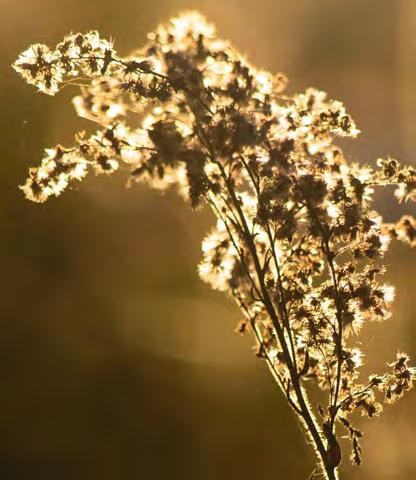
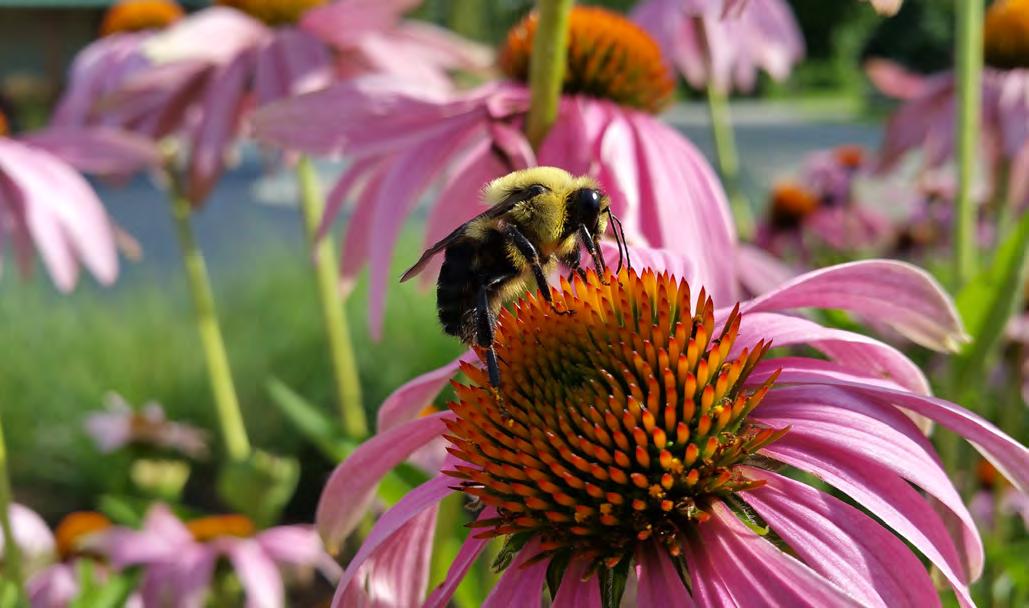
tunities to harvest seeds in the Toronto Botanical Garden. Share and trade seeds with neighbours and friends to re-wild your whole community!
Saturday, Oct. 14, 2 to 4 p.m.
Public $20, Members $15 TBG
Understanding Urban Rivers Can you name the river watersheds in the Toronto Region? Learn about the challenges facing the water resource system, the species that rely on it and what you can do to help!
Tuesday, Nov. 7, 6 to 8 p. m.
Public $15, Members $10 Virtual

“Participants at Gardening in a Changing Climate will receive a free e-copy of Greening Your Grounds Houseowner’s Guide”
• Look for more details on upcoming programs at torontobotanicalgarden.ca/learning •
30 minutes a day keeps the doctor away
By Sasan Beni Seasonal Horticulturist
ITRY TO SPEND at least 30 minutes in the forest every day. This ritual began as leisurely birdwatching in my college years and quickly evolved into a passion for wildlife photography. I have always been fascinated by the animals in our urban parks and I always have my camera handy, but most days, I don’t even take photographs.
My daily 30-minute dose of nature generally consists of standing on a wooded path or by the water’s edge, immersed in stillness. Sure, a part of my brain is still on the lookout for birds. Whether I hear a woodpecker hammering away in the distance, or a robin turning over leaf litter looking for food, or a pair of rowdy crows cawing overhead, my ears try to capture every sound. My eyes dart all over the place, after every ray of summer sun that trickles through the canopy down to the forest floor. Nature instills in me a broader spectrum of attention and care.
Research shows that time spent in nature–even the simple viewing of natural scenes–has profound impacts on our emotional and physical wellbeing. It reduces blood pressure, heart rate, muscle tension and the production of stress hormones.
IN ONE RECENT study involving 20,000 people, a team of researchers from the European Centre for Environment and Human Health at the University of Exeter, set out to determine how long one would need to be exposed to nature in order to feel healthy and have a strong sense of well-being. They concluded that two hours was the threshold, either spent all at once or spread over the course of a week. According to their calculations, my daily 30-minute dose

far exceeds the prescribed weekly amount. Furthermore, working as a horticulturist at TBG means that I spend even more time connecting with the natural world, nurturing it, learning from it, being inspired by it. But what is happening inside my mind when I’m working in the garden, or wandering through Wilket Creek Ravine, watching the rays of summer sun dancing through the canopy? What is the root emotion behind my 30-minute stillness, behind that broad spectrum of attention? I think it is a sense of connectivity.
Everything has its place in nature and by spending time outdoors, by witnessing the sensory theatre of green spaces, I too feel like I have my place in this world. I begin to accept myself. And through this self-acceptance, I reach a quiet and calm that translates into kindness, for myself, my neighbours and the environment. Take this simple example: when you and another hiker cross paths on a trail, there’s an unspoken rule that you acknowledge each other with a smile, a nod, or friendly “Hello”. This is not an instinct we have when we pass each other in busy urban areas. Community cohesion, therefore, is a byproduct of our connection to natural environments.
STARING AT A screen is not natural and can increase one’s anxiety. Having said that, I have been at the office computer all morning and I think it’s time for my medicine. Start the clock!
Mindfulness
TORONTOBOTANICALGARDEN.CA 20 SUMMER 2023
Photo: Sasan Beni, Northern bluet damselfly hovers over a pond.
Mindfulness in Nature
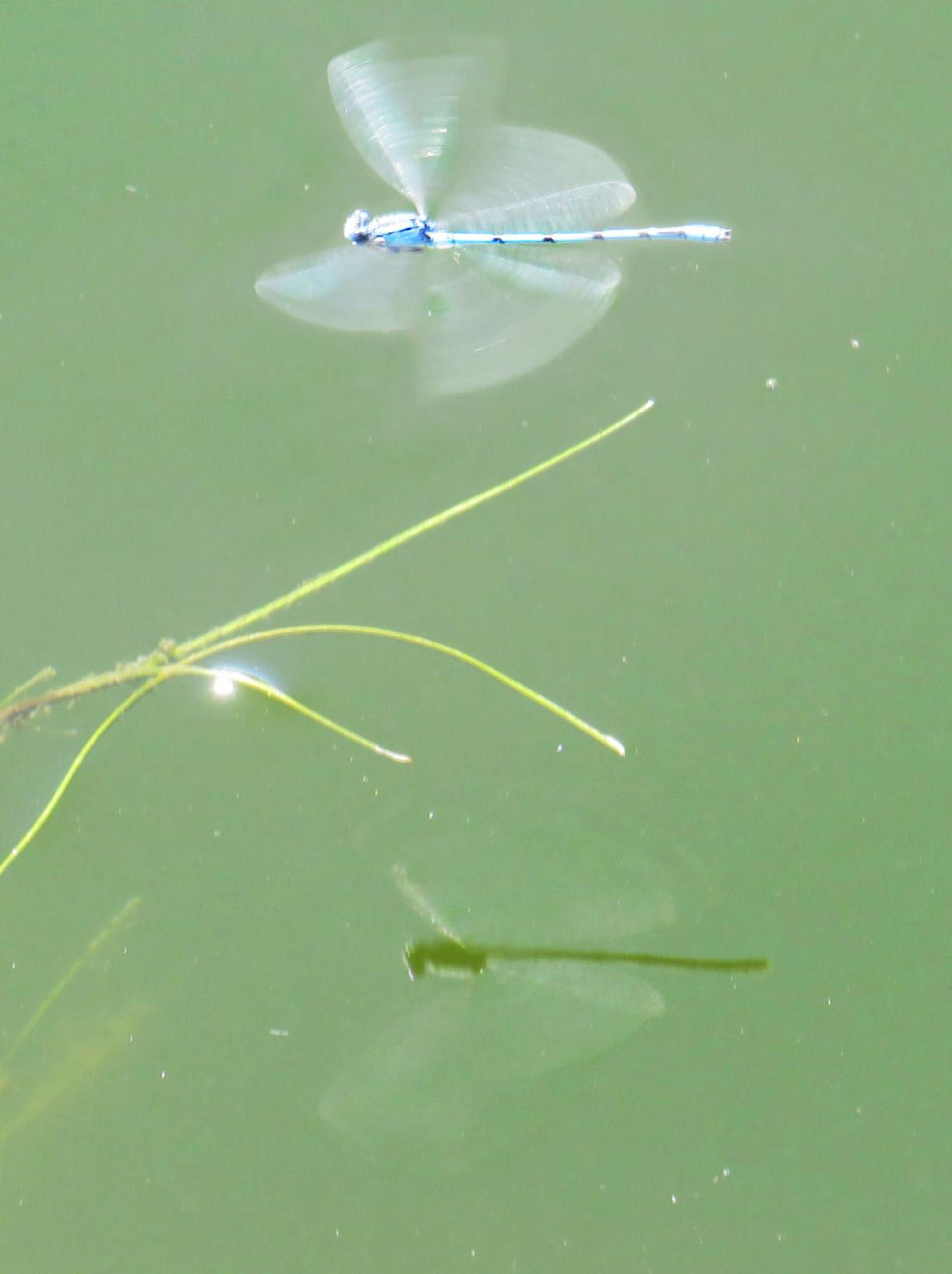
“Nature instills in me a broader spectrum of attention and care.”
Inspiring CONCEPTS
Ball FloraPlant Trial Gardens overflow with bold colour contrasts
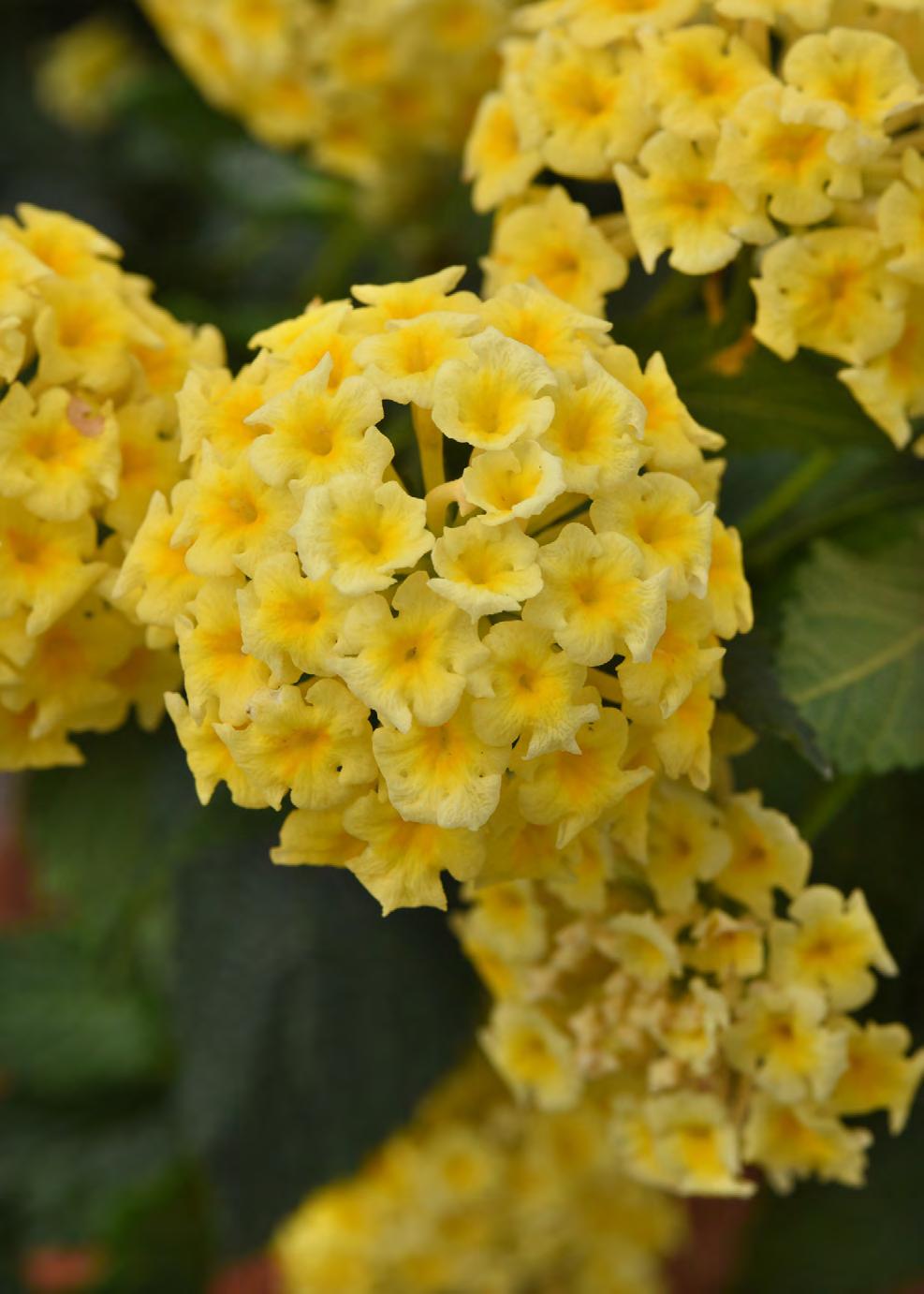 By Leanne Burkholder
By Leanne Burkholder
TORONTOBOTANICALGARDEN.CA 22 SUMMER 2023
PHOTOS: BALL HORTICULTURAL
1
FOLLOWING THE successes of 2021 and 2022, TBG visitors will again experience new bursts of colour this summer in the Ball FloraPlant Trial Gardens.
Not only will the displays provide visitors with an abundance of colour and floral contrasts, they will also showcase inspiring concepts for home gardeners, whether these be garden beds or balcony planters.
Gardeners will also get a preview of Ball’s planned annuals for 2024 in the gardens. Some new floral additions include gaura, which will be on display by the greenhouse beds. These beds will also have vegetables, benefitting from the pollinators attracted by the flowers.
Pollinators won’t be forgotten and photographers and visitors will see bees, butterflies, moths and hummingbirds checking out the annuals. An assortment of salvia, petunias, dahlia and lantana will be on display, along with coleus, angelonia and ipomoea.
LARGE ENTRANCE BEDS ADJACENT TO PARKING LOT
BED 1
1. Shamrock Butterscotch Glow Lantana

2. Roman Red Salvia back of bed for height
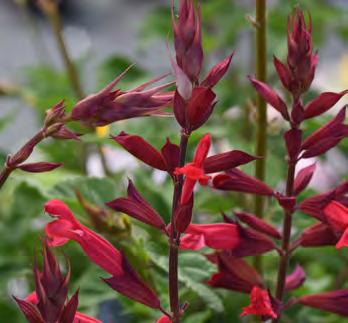

3. Coleus Solar Flare new for 2024

4. Angelonia Ruby Sangria new for 2024
5. Shamrock Red Lantana new for 2024
BED 2
6. Salvia Plum Crazy new for 2024 back of bed for height

7. Bloomify Pink Improved Lantana new for 2024


8. SureShot Pink Vein Petunia new for 2024
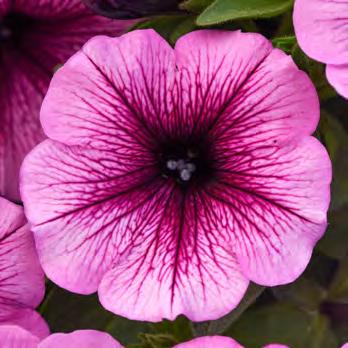
9. Landmark Sunrise Rose
9
8
2
4 7 5
3 6
SALVIA BEDS ACROSS FROM GREENHOUSE

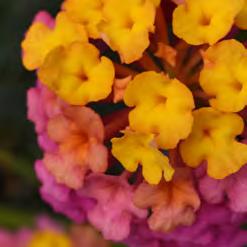
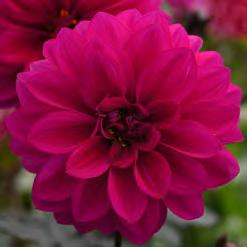



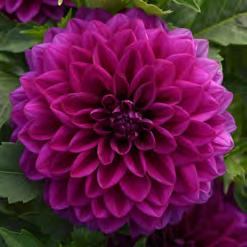
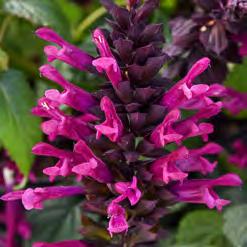
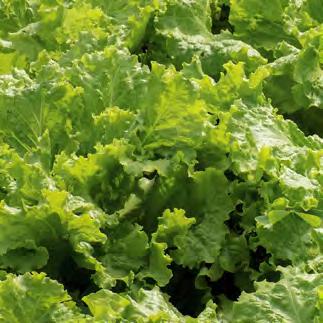
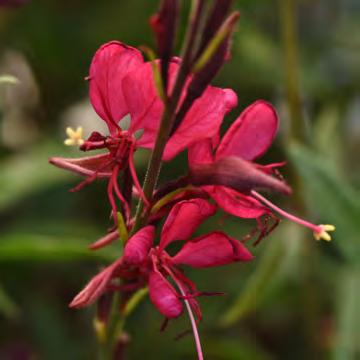
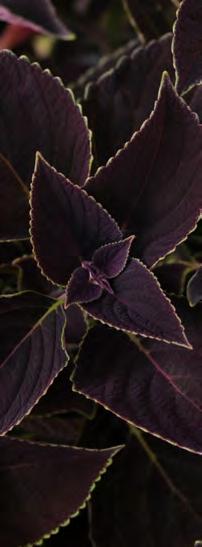
GREENHOUSE BED
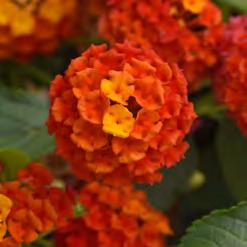
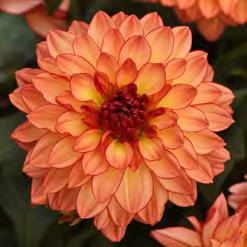
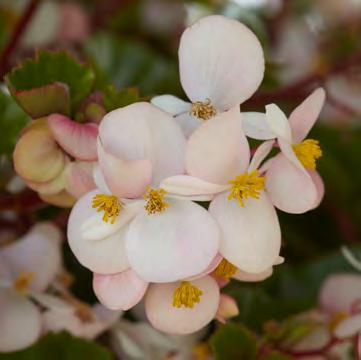
TORONTOBOTANICALGARDEN.CA 24 SUMMER 2023
BED 1
1. Salvia Plum Crazy new for 2024
2. Dahlia Venti Royal Purple new for 2024
3. Lantana Passionfruit
BED 2
4. Salvia Skyscraper Orange
5. Dahlia Venti Tequila Sunrise
6. Shamrock Orange Flame Lantana
BED 3
7. Salvia Skyscraper Pink
8. Dahlia City Lights Neon
9. Lantana Passionfruit
BED 4
1 4 7 2 5 8 3 6 9 10
shade bed under tree 10. Coleus Vino and Heartbreaker
Incorporate veggies as well!
Hula Blush Pink Begonia
back bed next to greenhouse
Gaura White, Gaura Pink
Gaura Dark Pink new for 2024
TRELLIS BEDS
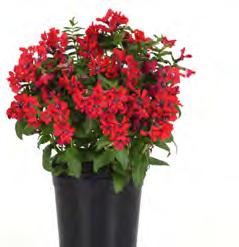
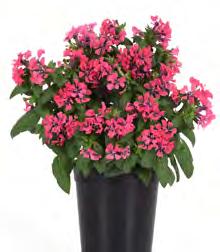
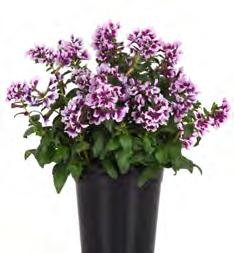
BED
METAL RINGS
BED
three colours

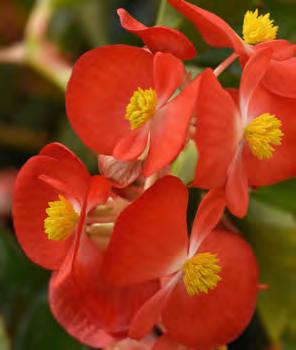
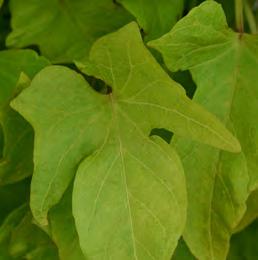
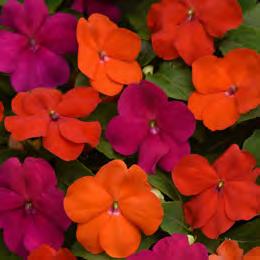
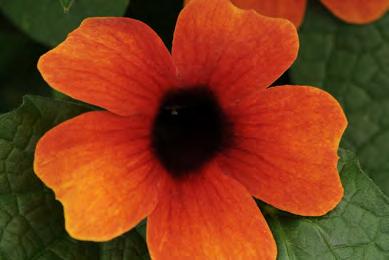
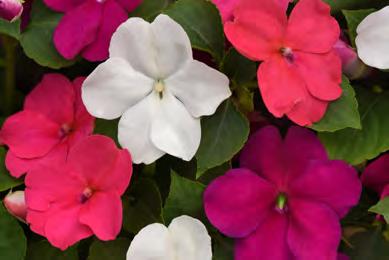
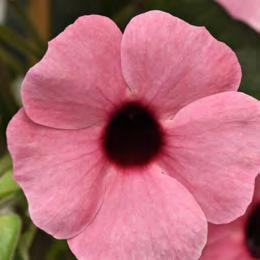
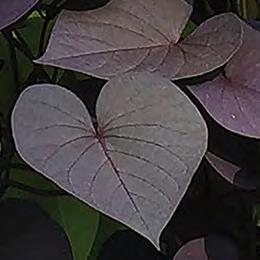
 1
1. Thunbergia Sunny Rose new for 2024
2. Solar Tower Black Ipomoea
3. Beacon Impatiens Portland Mix and White
2
4. Thunbergia Arizona Glow
5. Solar Tower Green Ipomoea
6. Beacon Impatiens Sanibel Mix and Orange
1
1. Thunbergia Sunny Rose new for 2024
2. Solar Tower Black Ipomoea
3. Beacon Impatiens Portland Mix and White
2
4. Thunbergia Arizona Glow
5. Solar Tower Green Ipomoea
6. Beacon Impatiens Sanibel Mix and Orange
BEDS IN FRONT OF MAIN BUILDING
1 3 2 5 4 6
Solarscape Impatiens Salmon, Orange Burst and Magenta
Cuphea
Hula Red Begonias
Dragon Wing Begonias large entrance containers

MAGICAL SUCCULENTS
These easy-to-grow gems are perfect for new (or seasoned) gardeners
By Lorraine Hunter
yOU DON’T NEED a yard to garden. With so many people living in condos, apartments and even rented rooms today, house gardening has become a thing! All you need is a porch or balcony, a windowsill or a table with a grow lamp.
Succulents are the perfect plants for growing in such areas. Ask TBG workshop instructor Molly Shannon who founded Canadian Succulents seven years ago with her sister Alex. Originally fascinated by the bright colours, different varieties, symmetry and resilience of these plants they began gathering and propagating them and the business has mushroomed over the past few years.
“Succulents are magical and they look like gems,” Molly says. “They are beautiful, easy to maintain and so simple to propagate that anyone can do it.”
Not just a trendy houseplant, however, succulents also help purify the air, removing toxins and releasing oxygen. Many, such as agave and aloe vera have healing properties and are used to treat cuts and burns. Caring for these tiny treasures can reduce stress and they make great gifts especially when planted together in micro dish-gardens.

Molly knows of what she speaks. She has more than 300 succulent varieties including cacti in the greenhouse she rents “down the road” in Uxbridge.
What began as a side hustle grew during the pandemic to become a thriving business which grows and creates succulent designs for weddings, centrepieces and favours, corporate events and gifts, as well as hotel and office greenery.
With a background in teaching, Molly gives workshops on designing with and growing succulents to horticulture groups, private parties and more. She attends markets and answers a lot of questions about growing succulents both in person and on social media. “I am always willing to help,” she says. Molly has a newsletter, a website, is active on Instagram and answers emails everyday to get as much correct information out there as possible.
She uses social media to promote the business, doing videos on succulent design, care and propagation and
TORONTOBOTANICALGARDEN.CA 27 SUMMER 2023
Succulent collection in shallow heart-shaped clay pots.
has over 20,000 followers on Tik Tok. More than a million people have viewed her care videos.
A workshop she presented at the TBG in March sold out so quickly that she gave two more in April.


People, particularly young people, are attracted to succulents says Molly because “being able to care for and propagate these lovely little plants makes them feel successful and gives them the confidence to grow other things.”


After discovering succulents, herself, “my plant world exploded,” says Molly. Her workshops are popular, she believes “because people want to be creative. They want the autonomy to create their own things even if they have limited space. They want ownership.”

Molly has encouraging words for new gardeners (or even seasoned ones like me) who feel badly if they happen to kill a plant. “I have killed so many succulents. You have to kill a lot of plants to grow your green thumb,” she says.
“Never feel bad if you kill a plant. Do your research and change your methods. Persistence is a testament to your gardening skills.”
Molly grows her succulents in shallow, heart- and othershaped clay pots made by a friend in North York. She breaks the rules by having no drainage holes in her pots, “People find them too messy, especially with irregularly shaped pots with no pot trays to put under them,” she explains.
Succulents have fleshy stems and leaves that can store water, allowing them to survive periods of drought in their natural environments. Molly makes her own porosity soil and waits until it dries out completely before watering her potted succulents. “Over watering is what kills them,” she says.
Look for information on how to care for succulents, transition them outdoors for the summer, how to propagate them and more on Molly’s website at www.canadiansucculents.net
TORONTOBOTANICALGARDEN.CA 28 SUMMER 2023
PHOTOS: ZACH BARANOWSKI AND MOLLY SHANNON
“People want to be creative.”
MOLLY AT THE WORKSHOP
“Let soil dry out between waterings.”
“Use a thin brush to dust leaves.”
“Succulents are easy to maintain.”
Succulent leaf propagation.
THE PERFECT GARDEN SHED

A ‘happy place’ for storing tools and propagating plants
By Georgie Kennedy
GLOSSY ADS FOR glass-domed garden structures leave me breathless. How glorious it would be to have unlimited acreage. I can easily imagine starting veggie seedlings in late winter and sipping herbal tea while I sketch plans for new beds in the fall.
PHOTO: UNSPLASH
AND YET, each spring, I get a jolt of excitement as I gaze upon my tiny carpenter-made shed of 20 years.It’s only 1.06 metres (3’ 4”) deep by 2.13 metres (7’) wide but I’ve come to realize it brings me the same joy and nearly the same functionality as a professional greenhouse. According to my Toronto Master Gardener colleagues, any dedicated area will suffice, so here are questions and good advice to consider before setting one up:
WHERE?
• Space around the shed: Give yourself room to manoeuver tools and wheeled trolleys into and around the shed.
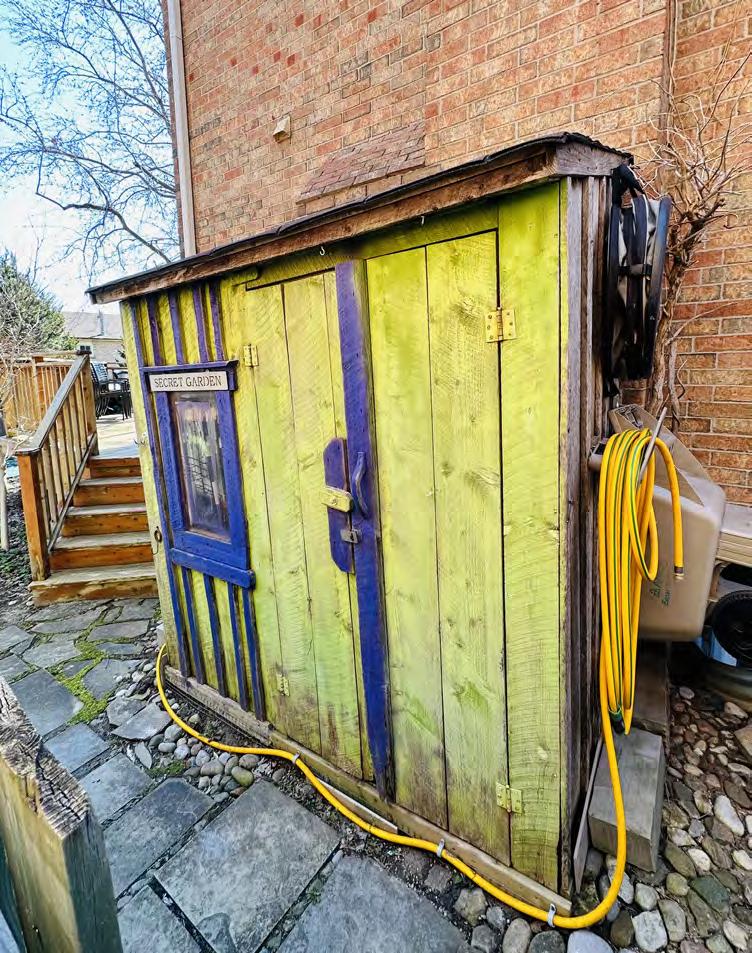
• Privacy: Do you want it out in the open or do you want a quiet hideaway?
• Shelter: Look for a shaded area where you and your tender plants will not be scorched by summer sun.
• Access to water: Do you have an external tap for a garden hose?
• Access to house: Will it be close enough to a side or back door for errands and bathroom breaks?
• Local by-laws: What are your city regulations for the setback of outbuildings from property lines?
WHAT SIZE?
• Will your city require a building permit for your shed if it is over a certain size?
• Will your shed be just for storing tools or are you a hardcore botanist who needs space for experiments with all forms of plant propagation?
WHAT’S ESSENTIAL?
• A solid base. Field mice will take winter shelter in your shed but it’s ideal if they cannot enter through the floor. My shed was plunked on concrete blocks, and the wee rodents have made Swiss cheese out of the floorboards. Last year I covered them over with snap-together flooring in an attempt to extend the life of my tiny den.
• Extra height for long poles and tall people. Vertical space is the secret of storage.
• A window for light and cheer, especially on occasions when rain catches you.
• Tall double doors for access with large items.
• Flexible walls and ceiling to screw in hooks, hammer in nails and add shelves.
• Access to electricity either from solar panels or wiring for light (nice but not necessary).
The actual construction of your shed will depend on your budget and your building skills. Some options include:
• Ready to assemble box store plastic sheds delivered to the door for you to do it.
• Handmade wooden sheds found on country roads, delivered and put up for you.
• Wooden structures that are custom designed to your exact specifications by specialty companies. They can do it or provide instructions for you to do it.
• Grand English-style glass conservatories and professional solariums attached to the house. They do it.
TORONTOBOTANICALGARDEN.CA 30 SUMMER 2023
PHOTOS: GEORGIE KENNEDY, VERONICA SLIVA, UNSPLASH
“MY HAPPY PLACE IS ON THE NARROW NORTH SIDE OF OUR WEST-FACING HOUSE”
Georgie’s shed.
MY HAPPY PLACE is on the narrow north side of our westfacing house. The neighbours have no windows on that wall so I was free to paint it a funky lime green and purple. My daughter and son-in-law helped me lay a cut stone path from the driveway to the backyard and, in the sliver of soil next to the fence, I planted hardy low-growing perennials. Having a small space has forced curation of my needs and made me mindful of my garden practices and habits. Ultimately, the perfect shed is a place to set aside all worries and feel at one with your world, whether it is a corner of your condo balcony or a large conservatory.
If you are wondering how to set up the area as a workstation, how to maximize the space and how to get into a good “flow” when you are in the garden, stay tuned for The Perfect Garden Shed Part 2 when I will share more ideas and suggestions.


TORONTO BUILDING BYLAWS
A SHED IS exempt from the requirement to obtain a permit under section 8 of the Act and is exempt from compliance with this Code, provided that the shed:



• is not more than 15 m2 in gross area,
• is not more than one storey in building height,
• is not attached to a building or any other structure,
• is used only for storage purposes ancillary to a principal building on the lot, and
• does not have plumbing.
https://www.toronto.ca/citygovernment/planningdevelopment/zoning-by-lawpreliminary-zoning-reviews/ zoning-bylaws/new-torontozoning-information/
TORONTOBOTANICALGARDEN.CA 31 SUMMER 2023
Garden writer Veronica Sliva’s shed in the back of her garden.
Storage for pots.
DIY shed from a kit.
Window sheds bright light.
Flexible walls for hanging tools.
the geese atop the garden shed
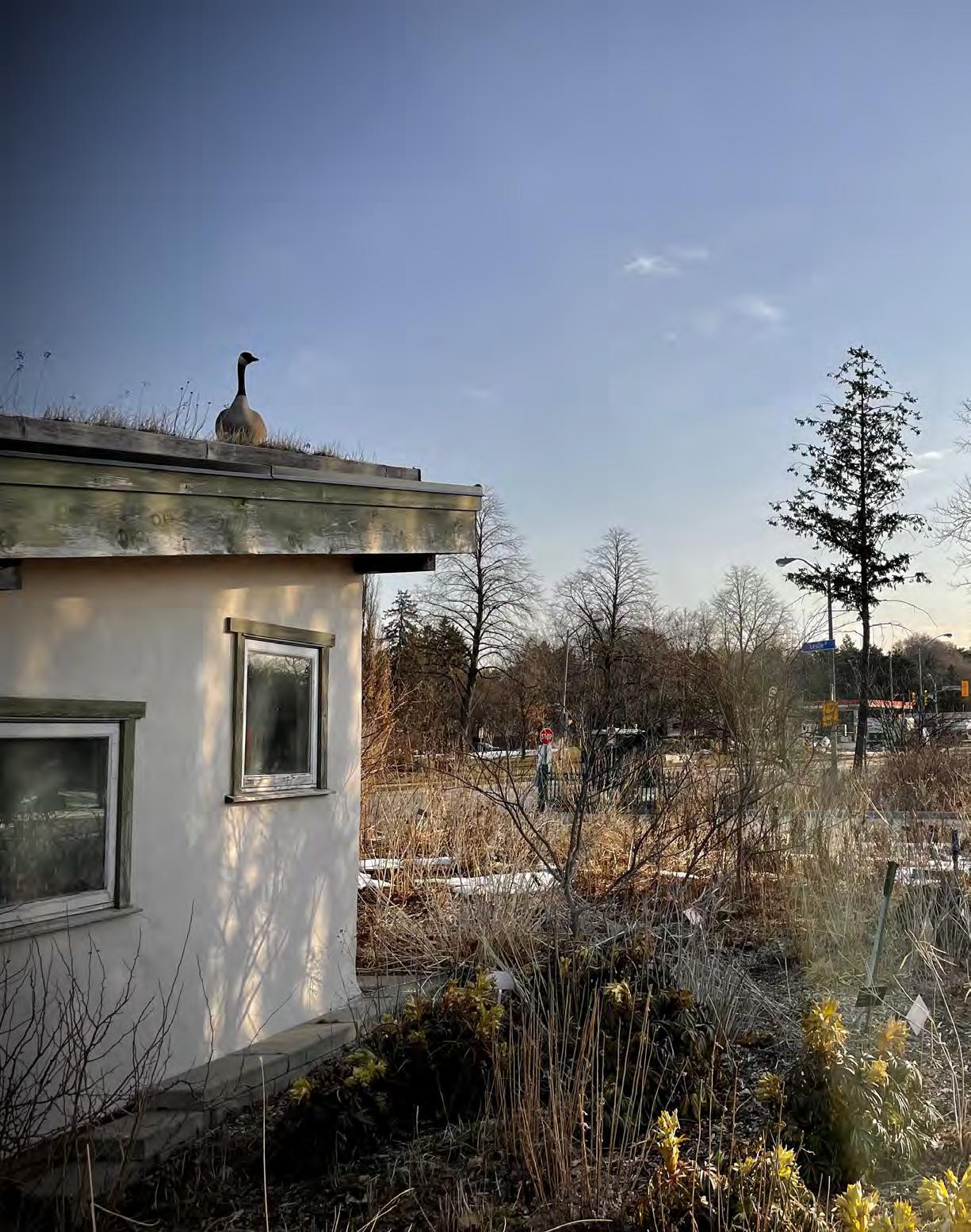
TORONTOBOTANICALGARDEN.CA 32 SUMMER 2023
It was a cold spring morning when the pair of geese flew in At first they wandered the parking lot, getting a lay of the land
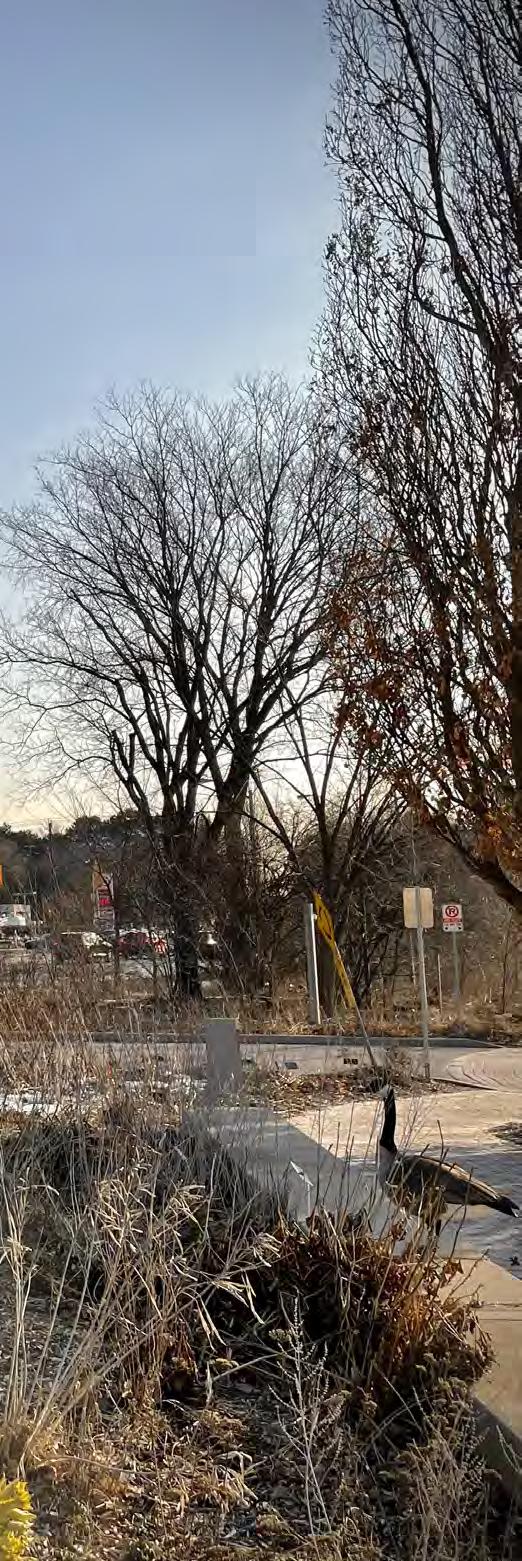
Occasionally wandering in to check out the gardens or confidently taking their time crossing the busy street to the park across the way
Days passed like this Asphalt to garden to park
Asphalt to garden to park
Then one morning, when the trio of gardeners, set off to start their day they discovered this feathered pair had built a home atop their garden shed
And as the days passed, the female hunkered down spending more and more of her time snuggled up within her nest as her male companion stood guard from down on the garden path Dealing with each passerby, with a warning hiss
The horticulture team of three, tried their best to keep their distance To respect the family’s space And there grew a kind of understanding between gardener and geese
“We mean no harm”, the gardeners said, sidestepping father goose and in response the male would let out the gentlest little hiss
This continued until one day, when the sun’s warm rays lit up the garden beds, blue skies all around them, not a single cloud in sight
The mother rose to stretch her legs, as she felt a stirring within the eggs And before the gardeners had time to blink three bright-yellow, fluffy goslings Could be seen upon the shed
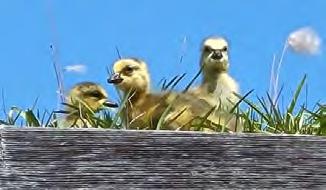
And soon enough the young goslings Were ready to leave the nest
Following their guardians
They stepped up to the edge And taking one great leap
Landed upon the mulch beneath
And off they stumbled, this family of five to explore their brave new world outside.
By Megan Blacquiere
PHOTOS: SASAN BENI
CHALLENGE BALCONY
Don’t let a lack of gardening space limit you

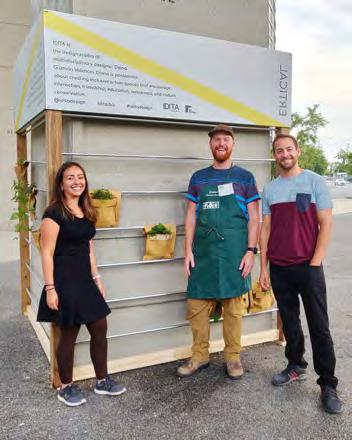
 By Leanne Burkholder
By Leanne Burkholder
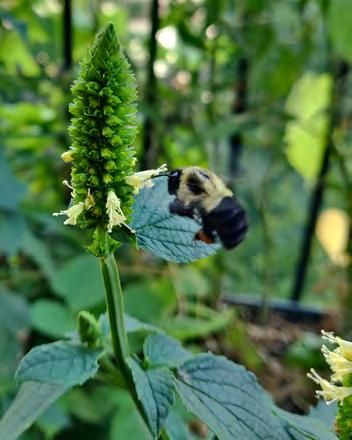 Balcony in Bloom
Bee on yellow hyssop Balcony in winter Ryan Godfrey, centre
PHOTOS: RYAN GODFREY
Balcony in Bloom
Bee on yellow hyssop Balcony in winter Ryan Godfrey, centre
PHOTOS: RYAN GODFREY
THINK YOU CAN’T grow anything on your condo or apartment balcony? Let me introduce you to Ryan Godfrey.
Ryan lives in a condo in downtown Toronto. As resident botanist for the World Wildlife Fund Canada (WWF), and Master Gardener in training, he knows plants. But he also knew it would be a challenge to grow anything on a balcony. It took several tries and failures, but he remained undeterred.
“As someone passionate about plants, particularly native plants, growing on my balcony was a way I could have plants with me everyday.”
He looked carefully at the ecological growing conditions of plants – some plants grow on cliffs, some in meadows, some in shallow soil. He then picked plants and soil mediums that matched those conditions (right plant right place). Part of his west facing balcony has two hours of sun, the other part has six hours. Based on these criteria he experimented with over 30 varieties of native plants. He found success with the following:
would dry out quickly. So, he moved to larger containers and found much more success. He got creative for maintenance: he hooked up a hose to his kitchen sink, ‘borrowed’ yard bags in the neighbourhood in the fall to put leaf mulch on his plants to overwinter and uses a hairdryer (yes you read that right) to remove the leaves in the spring.
As a certified seed collector, Ryan also often collects the seeds and provides these to other gardeners.
Committed to promoting the benefits of native plants, he advocated them to his condominium board as alternatives to invasives such as periwinkle and more costly annual installations, saving money and maintenance. He helped to create gardens that bloom from April to November, with trilliums (Trillium grandiflora), purple coneflower (Echinacea purpura), rudbeckia (Rudbeckia hirta), goldenrod and milkweed. When the milkweed attracted aphids, he showed the maintenance team how to eliminate them by spraying with water (instead
• Wild columbine (Aquilegia canadensis)
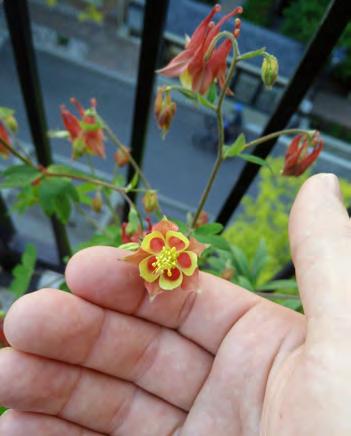
• Cylindrical blazing star (Liatris cylindracea)
• Little blue stem (Schizachyrium scoparium)
• Swamp milk weed (Asclepias incarnata)
• Harebell (Campanula rotundifolia)
• Bluestem golden rod (Solidago caesia)
• Zig zag golden rod (Solidago flexicaulis)
• Wild strawberry (Fragaria virginiana)
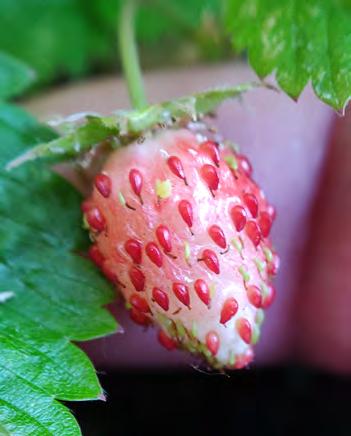

• Canada wild rye (Elymus canadensis)
• Wild violets (Viola sororia)
• Prickly pear cactus (Opuntia humifusa)
Ryan started by growing seeds in small containers but found that they would freeze or thaw too quickly with weather changes. He also found that the containers
of insecticides). He also encouraged putting leaf mulch on the beds for winter for pollinators and as nutrients and compost. To help inform residents, he installed “pollinator garden” signs that he got for free from the WWF, the David Suzuki Foundation, North American Native Plant Society (NANPS) and Pollinator Partnership Canada.
The gardens were positively received by the board and residents – the project also drew out a few gardeners in his building who helped with promotion and planning. He has also advocated in his community: Ryan has led nature walks at Allan Gardens and High Park that explore “the wonderful (and very queer) sexual lives of plants.”
The takeaway Ryan has for anyone wanting to grow plants in a small space: do what you love – experiment, learn and enjoy the results!
TORONTOBOTANICALGARDEN.CA 35 SUMMER 2023
“Do what you love –experiment, learn and enjoy the results!”
– Ryan Godfrey
Wild strawberry
Wild columbine
Canada Anemone
Three approaches to growing fabulous summer flowers
Mini Meadows
Grow a Little Patch of Colorful Flowers – Anywhere around Your Yard
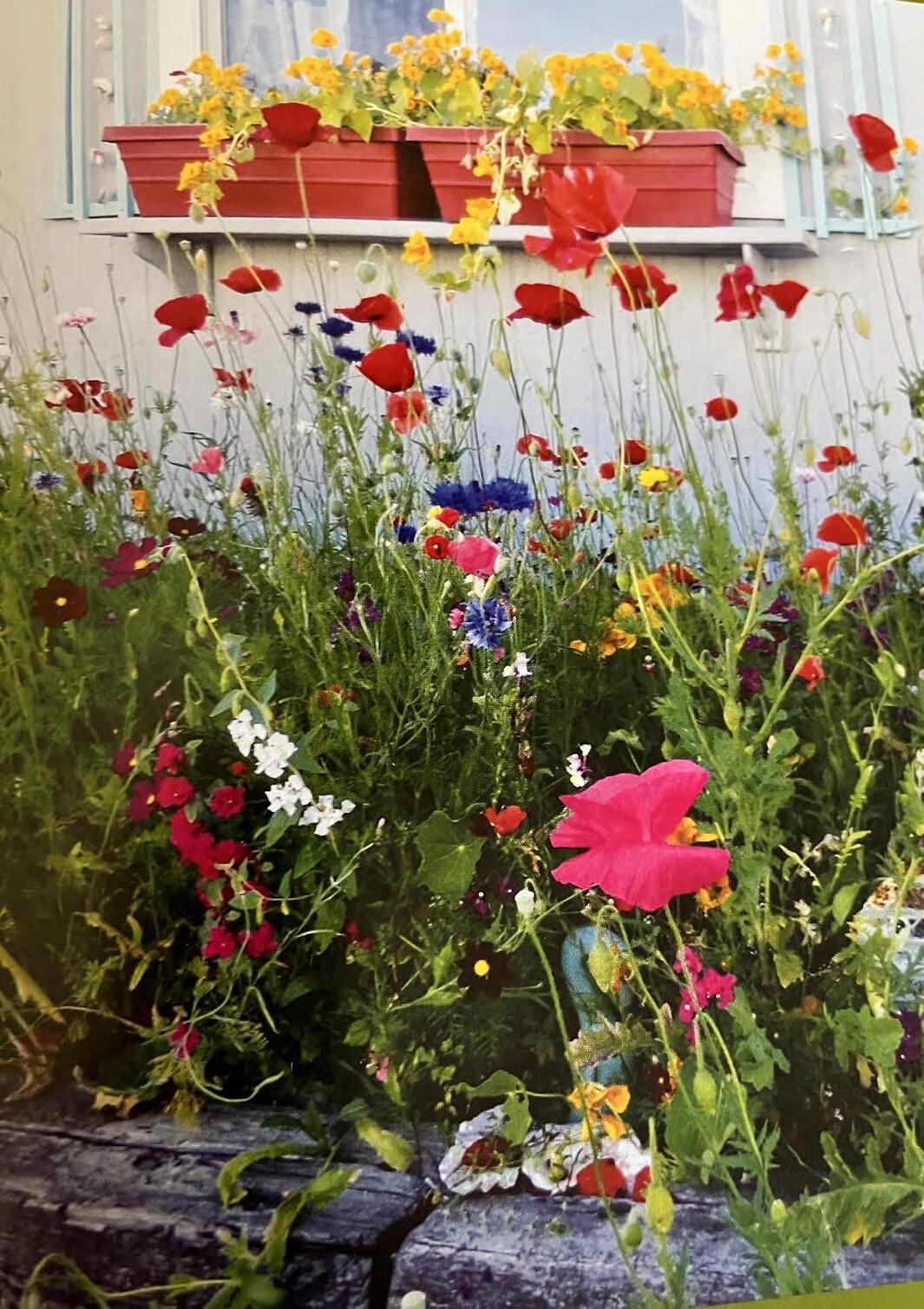
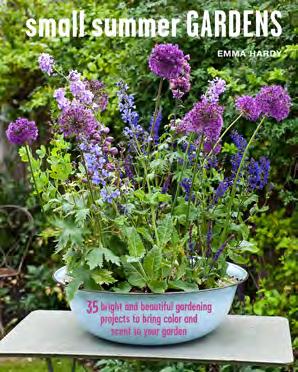
Reviewed by Veronica
Sliva
If you haven’t given much thought to growing a meadow in your yard, a look through this book will get you thinking about it. The Merriam-Webster dictionary defines meadow as “land that is covered or mostly covered with grass”. In Mini Meadows, author Mike Lizotte, owner of American Measows, conjures up a very different picture. His mini meadow is a kind of informal flower garden started with directly sown seed to create an informal and colourful “meadow” that requires little in the way of space, mowing, or maintenance. Mini meadows use less water than traditional lawns while providing a habitat for pollinators.
Lizotte guides the home gardener through the process of creating a mini meadow starting with choosing the right varieties of seeds, preparing the soil, and maintaining it. He advises on what to plant in different circumstances such as planting to beautify a “hell strip”, to stop erosion, fill a boggy spot, or to establish a nesting area for bees and butterflies.
This book is for anyone who wants to create a beautiful, low-maintenance space that invites pollinators. It’s a great project to get kids involved. And the photography by Rob Cardillo is luscious. It makes picking up the book irresistible.

Mini Meadows – Grow a Little Patch of Colorful Flowers – Anywhere around Your Yard by Mike Lizotte (Storey Publishing)


BOOK SHELF TORONTOBOTANICALGARDEN.CA 36 SUMMER 2023
The Old Farmer’s Almanac Flower Gardener’s Handbook
Reviewed by Veronica Sliva
If you like The Old Farmer’s Almanac, you will love their Flower Gardener’s Handbook
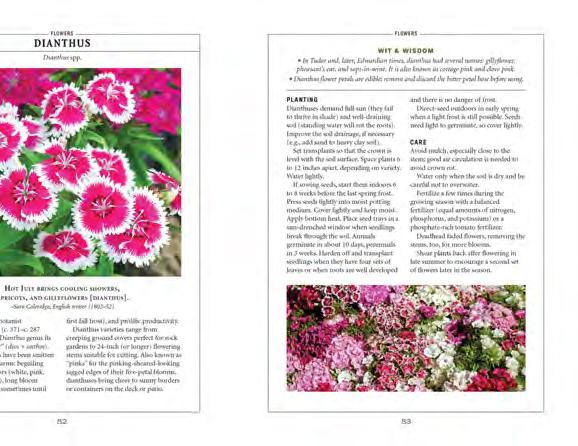
Filled with fascinating facts, folklore and history the book is written in the same style as the Almanac with content that appeals to both novice gardeners as well as seasoned horticulturists and the rest of us in between.
The first part of the book is all about planning and prepping the garden with basic information about perennial, annual and biennial flowers. Also included are chapters on Soil Matters and Natives vs Non-natives, as well as all the practical information you would expect from The Old Farmer’s Almanac.
Of particular note is a section on Canadian Frosts and Growing Seasons (as well as one for the United States).
In Part 2 we get to the flowers. This section contains needto-know information on dealing with pests and diseases, fertilizers, being “water-wise” and putting the garden to bed.
If you are interested in folklore such as interpreting plant names, the language of flowers and birth month flowers, it is all there, too.
With pretty photographs, 32 common flowering plants are profiled individually with information about planting and care as well as recommended varieties. There are even tips on harvesting and conditioning flowers for the vase. The plants chosen for this chapter were the result of questions generated by visitors and readers to The Old Farmer’s Almanac website (almanac.com).
Throughout the book “journal pages” you can fill in are included so that you can keep your own records.
This book is for all experience levels and is a companion to the Vegetable Gardener’s Handbook. The Old Farmer’s Almanac Flower Gardener’s Handbook (Yankee Publishing Inc., Distributed by Firefly Books).
small summer gardens
35 bright and beautiful projects to bring color and scent to your garden
Reviewed by Lorraine Hunter
Looking for some clever inspiration for quick and easy containers to brighten your summer garden? Whether you have a large yard or a tiny balcony you will find lots of creative ideas in small summer gardens 35 bright and beautiful projects to bring color and scent to your garden by Emma Hardy.
There are projects for both indoor and outdoor gardening, as well as sections on edible gardening and foliage displays.
Suggested plants include annuals, perennials and edibles. There are low maintenance combos like thistles and grasses in a metal container, a water garden in a galvanized tub or a fragrant special occasion project such as a thyme and sweet alyssum wreath.

From vintage tins, metal tubs and old concrete pots to baskets, glass jars and pottery mugs and bowls, repurposed containers take on new lives for Hardy’s inventive projects. “I love using old containers, which can be bought in second-hand stores and online for my planting displays,” she writes.
You can either follow her plant lists like recipes or use them as a starting point for your own colour schemes and plant combinations.
Hardy presents step-by-step instructions and photos for each project and offers tips and techniques for choosing and preparing containers such as making drainage holes, buying and preparing plants, potting mixes as well as watering, feeding, deadheading, dealing with pests and diseases and more.
small summer gardens 35 bright and beautiful projects to bring color and scent to your garden by Emma Hardy (Published by CICO Books. Distributed by Firefly Books.)
TORONTOBOTANICALGARDEN.CA 37 SUMMER 2023
Good Things Are Happening
TBG BLOOM CAFÉ
Treat yourself to a floral designed cookie from the TBG Bloom Café, open daily throughout the summer. Stop by for coffee, fresh pastries, wraps, sandwiches, ice cream and more. The café is located in the old barn in Edwards Gardens. TBG members receive a 10 per cent discount.

See You at the Farmers Market
The return of the Farmers Market to Toronto Botanical Garden is a cause for celebration, not only for the fresh produce and artisanal goods on offer, but also for the positive impact Farmers Markets can have on the local economy, community-building and overall well-being of urban dwellers. The longrunning market which was paused in 2018 has been missed as a beloved gathering place, and its revival is a testament to the resilience of Toronto’s farmers, makers and community, who have weathered the challenges of the
pandemic and continue to work together to build a better future.
By bringing together people from different backgrounds and walks of life, farmers markets create a sense of community and provide a space for people to connect over a shared love of food and local culture.

To revive and refresh our Farmers Market, the Garden has partnered with Appletree Markets and Events, who are experts in this field. Appletree Markets has a wealth of experience in organizing impactful markets across Toronto including the Davisville Village Market in June Rowlands Park and the Gould Street Market on the Toronto Metropolitan University
Campus, among others. The dynamic founders are a husband-and-wife team, Chris and Lesley, who specialize in building community through creative and curated experiences that marry the latest in innovative installations, partnered with the finest local libations and farmfresh fare.
The Farmers Market at the Garden is open Thursdays from 3 to 7 p.m. until Oct. 5. In addition to local farmers and sustainable vendors, there will be live entertainment, family nature activities, guided garden tours, outdoor dining, film nights and a chance to connect with your neighbours and plant community.
By Jenny Rhodenizer
TORONTOBOTANICALGARDEN.CA 38 SUMMER 2023
TOP PHOTO: UNSPLASH
BE SURE TO VISIT THE GARDEN SHOP
where new plants, garden tools and accessories, gift suggestions and more arrive regularly. Now open daily from 10:30 a.m. to 4:30 p.m. TBG members receive a 10 per cent discount.

Attention Music, Dance and Garden Lovers For almost a decade, the Edwards Summer Music Series has been a favourite among music lovers, bringing together talented performers from across the city and beyond to serenade audiences in the beautiful outdoor setting of the Toronto Botanical Garden and Edwards Gardens. This year, the series is taking things up a notch and responding to our audience by adding more dancing to the mix.
That’s right – starting this summer, concert-goers will be invited to get up and groove to the music. From pre-show beginner dance lessons to circus performances, the Edwards Summer Music Series will move your body and your soul.
The concert series, which is named after its generous sponsor, the Edwards Charitable Foundation, will feature an impressive lineup of award-winning, local musicians from a wide variety of genres. From jazz to blues to
classical, and even a Scottish-Reggae band… there will be music to suit all tastes and whet your appetite for more.
The beautiful natural backdrop of the Toronto Botanical Garden is the perfect place to kick back, relax, and enjoy some top-notch music…and dancing. Arrive early to visit the Farmers Market (3 to 7 p.m.) or take a guided tour of the garden (prebook your spot), or enjoy a self-guided stroll through one of Toronto’s most beautiful outdoor spaces.

Mark your calendars – Thursdays at the Garden from July 13 to Aug. 31 are not to be missed this summer. The lineup includes: July 13, Mimi O’Bonsawin, Indigenous; July 20, Ashara, Reggie/Scottish; July 27, VC2, Classical; Aug. 3, Shuffle Demons, Jazz & Funk; Aug. 10, Quisha Wint, Soul & R & B; Aug. 17, Adis & Havana 1950s, Latin; Aug. 24, Lemon Trubac, Ukrainian; Aug. 31, Billy Newton-Davis, R & B/Jazz.
TBG AGM JUNE 20
Toronto Botanical Garden’s Annual General Meeting will be held on Tuesday, June 20, 2023 at 6 p.m. in person at the Garden. Current members in good standing will receive an invitation via email. If you have any questions or comments about the Annual General Meeting or the status of your membership, please contact the membership office or call our reception desk at 416-397-1341.
BOTTOM PHOTO: VC2 CELLO DUO TO PLAY JULY 27.
Flowers and Footwear In partnership with the Bata Shoe Museum’s new Flowers and Footwear exhibition, Toronto Botanical Garden’s floral design students attended the opening night festivities adorning guests with fresh floral shoe clips, and mini jacket bouquets that turned heads and raised footwear to new heights. Look for more collaborations with the Bata Shoe Museum coming this summer and fall.
Pollinator Week at the TBG
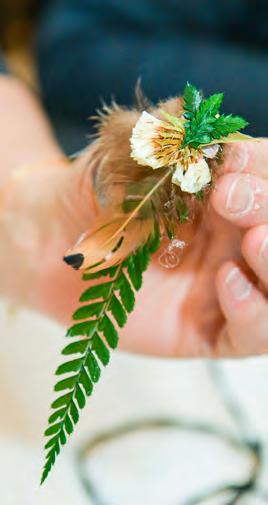
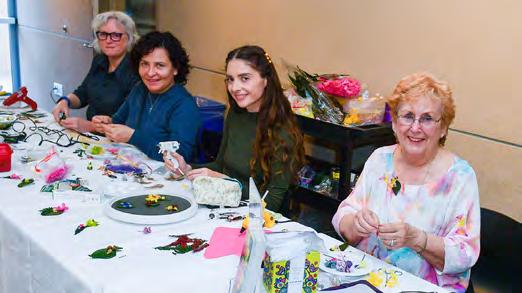

Be sure to visit the Garden during Pollinator Week June 19 to 25. There will be drop-in pollinatorthemed activities in the children’s centre during the Farmers Market on Thursday, June 22. Pollinator Week is an annual celebration to raise awareness of the importance of pollinators.
Garden Obelisks Make use of vertical space in your garden with a 4 or 6-foot obelisk. Made in Toronto exclusively for the Toronto Botanical Garden, these obelisks are superb structures for showcasing and supporting vines and vegetables. Black, powder-coated steel ensures that these towers remain rust-resistant and durable for many years to come. Available throughout the year at the Garden Shop. Available in two sizes: 4 ft $99.99; 6 ft $124.99.
GARDEN TOURS - by HNA Travels – your garden tour specialist. NEWPORT RI Flower Show – June 20-24, 2023; BUFFALO GARDEN FESTIVAL TOUR – July 23-25, 2023; Also, HNA is offering a Louise Penny THREE PINES TOUR – June 4-7, 2023. All tours led by Margaret Dailey-Plouffe. Email Margaret at hnatravels@gmail.com or call 613 843-9900.

RAVINE SYMPOSIUM, FRIDAY, NOVEMBER 3
Reserve the date for TBG’s Urban Ravine Symposium. The Symposium will explore creative solutions to the challenges such as invasive species and extreme flooding and celebrate the ecological benefits the ravines provide to city dwellers.
Bloom Dance & Circus in the Garden Back this Summer by popular demand! An outdoor, high-flying dance, circus, and garden experience with storytelling, aerial tricks, beauty, and joy. Incredible dance and circus acts bring to life the essence of hope, friendship, and love through magical flowers in the garden. Matinee and evening performances 2 p.m. and 7 p.m. July 10, 11, 12, 16, 18 & 19. Tickets: (plus taxes and service fees): General Admission: $55; TBG Members/Volunteers: $50; Students/Children: $25. The show will be held rain or shine. Performances will take place indoors in the case of extreme weather. Developed in partnership with Artists’ Play Dance + Circus Studio and A/P Events.

Sales Representative, ABR, SRES H AL L O F FAME AWAR D LI FE TI ME ACHI E VEMEN T AWAR D TOR ON TO M ASTER GA RD ENE R RE/MAX HALLMARK REALTY LTD., BROKERAGE Direct 416.564.9450
@JoseeCoutureTorontoRealEstate
• CLASSIFIED •
HIBISCUS
Flamboyant Queen of the Tropics
By Georgie Kennedy
ALTHOUGH THE HIBISCUS is well known as the Queen of the Tropics, it is also a popular houseplant in our climate to be grown inside in a container over the winter and taken outdoors to enjoy our summers.
Hibiscus is a large genus in the mallow family (Malvaceae) encompassing hundreds of species native to warmtemperate, subtropical and tropical regions. It can range in size from low container-size shrubs to trees taller than 6 metres (20 feet), ideal for windbreaks or privacy.
The flowers are trumpet-shaped, with five or more petals, ranging from 4 to 18 centimetres (1½ to 7 inches) across. The stamen filaments are fused into a conspicuous protuberance. Flowers can be single or double and come in a wide array of colour combinations. Each one is precious. The bud bursts into bloom one morning while the sun is shining, and that night it folds itself up and fades away. This is the reason hibiscus is rarely used in a bouquet of cut flowers.
Glamorous Chinese Hibiscus (Hibiscus rosa-sinensis), with its many hybrids and showy colours, is easily the world’s best-known tropical shrub and flower. Around the world, it has many common names such as Flor de Jamaica, Rose Mallow, Lipstick Flower, China Rose and Shoeblack Plant. Some hardy varieties can withstand windy, salt air so you may notice them while on a warm beach vacation:
• Hibiscus rosa-sinensis variegatus, simple red flowers and attractive foliage.
• Tall, willowy ‘La France’, white or soft pink with lacy petal edges.
• Dangling Japanese Lantern (Hibiscus schizopetalus), frilly red petals.
Hibiscus Care
Like all drama queens, Chinese Hibiscus hybrids demand attention. Indoors in the Toronto area, you can try to mimic their ideal conditions by providing:
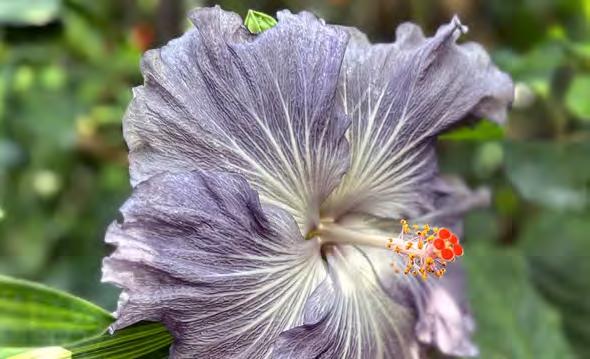
• A sunny location near but not touching a southfacing window;
• Premium potting soil with organic matter;
• Good drainage; (Hibiscus cannot tolerate wet feet.)
• Occasional misting;
• A rest period from October to February. Leaves may fall off, but water sparingly
If you want to enjoy your hibiscus outdoors during the growing season follow these tips:
• In late winter, add slow-release fertilizer and prune severely, just above a node.
• Gradually introduce it to the patio for a few hours a day when temperatures rise above 13°C /55°F. Too much direct sun at once can burn leaves so be patient.
• Once it has adjusted to its new environment, the plant can be repotted and started on summer fertilization.
• Excessive shade reduces flower production. Place it in the warmest part of the garden where it will receive day-long sun sheltered from winds.
• In early September, prepare to return it indoors. Cut back to within 10 to 12 cm (4-5 in) off the main stems, clean the surface of the soil and hose off the entire plant to remove insects.
• Tropical hibiscus does not tolerate temperatures below 3°C (37°F) so act before the night air drops too low
Hybrids are susceptible to a multitude of problems. Nutritional deficiencies, over-fertilization, poor drainage and drought can cause flower buds to drop. Sooty mould and fungus gnats are other possible issues. Consult your local nursery or go to the Toronto Master Gardener website for more detailed care instructions: https://www. torontomastergardeners.ca/askagardener/indoor-hibiscus/
Tropical Flowering Plants by Kirsten Albrecht Llamas (Timber Press, 2003) is an authoritative and comprehensive horticultural book on the topic.
Reported Uses for Hibiscus (Hibiscus rosa-sinensis)
1. The flower can be rubbed on shoes as a shoe polish.
2. Fibre from the stem is used in the manufacture of clothes, nets and paper
3. The flower is used in red zinger and other herbal teas for its many minerals and vitamins.
4. Sorrel, a Caribbean Christmas drink, is made from the fruit of certain hibiscus, with ginger, pimento, sugar and optional rum.
5. Dried hibiscus is an edible delicacy. It can be candied and used as a garnish in champagne.
6. A single red hibiscus is traditionally tucked behind the ear of a Tahitian woman to indicate her availability for marriage.
PHOTO: GEORGIE KENNEDY
Houseplant Profile TORONTOBOTANICALGARDEN.CA 41 SUMMER 2023
MOSQUITO REPELLENT DIY
Make your own with essential oils and witch hazel
By Jenny Rhodenizer Director of Marketing & Audience Engagement
HERE’S AN EASY recipe to make with your kids to deter bugs, smell great and provide everyone with the confidence to head outdoors. It also makes a thoughtful summer hostess gift. Essential oils are available from health food stores and pharmacies.

Ingredients
• 4 drops citronella essential oil
• 4 drops lemongrass essential oil
• 4 drops rosemary essential oil
• 4 drops eucalyptus essential oil
• 4 drops mint essential oil
• 4 drops lavender essential oil
• ¼ cup pure witch hazel
Instructions
• Combine all ingredients in a small glass container, ideally with a spout.
• Mix together and use a small funnel to pour into an atomizer (I bought mine online). Create and affix a custom label.
• Shake well before using and apply liberally as needed.
Note: If you have sensitive skin, try spraying on your clothing or hat rather than directly on your skin.
TORONTOBOTANICALGARDEN.CA 42 SUMMER 2023
PHOTO: JENNY RHODENIZER
BOARD OF DIRECTORS
Board Chair Gordon Ashworth, Vice Chair Tony DiGiovanni, Secretary Dianne Azzarello, Treasurer Janice Winton
Barb Anie, Adeline Cheng, Doris Chee, Michele Chandler, Ben Cullen, Lisa Ellis, Susan Grundy, Abdullah Hamidi, Harry Jongerden, Nicole Leaper, Margareth Lobo Gault, Helder Marcos, Haig Seferian
Ex Officio: Christina Iacovino (City of Toronto), Derryn Gill (Garden Club of Toronto), Ingrid Smith (Milne House Garden Club).
ABOUT THE TORONTO BOTANICAL GARDEN
The Toronto Botanical Garden (TBG) is a volunteer-based, charitable organization that raises more than 95 per cent of its operating funds through membership, facility rentals, retail operations, program fees and donations. The organization relies on its partnership with the City of Toronto and on the generosity and financial commitment of individuals, foundations and corporations to support the many beneficial services we provide to the community.
OUR MISSION: Toronto Botanical Garden connects people to plants, inspiring us to live in harmony with nature.
OUR VISION: Toronto Botanical Garden will be renowned for its display of nature’s beauty and as a dynamic hub for plant-centred learning, conservation and research.
SIGN UP FOR GARDEN ENEWS!

Receive the latest horticultural news and information on events, workshops, lectures and other horticultural happenings. Free registration at https://torontobotanicalgarden.ca
GENERAL HOURS of ADMISSION
The Garden is open daily from dawn until dusk and admission is free. In-person adult classes, guided garden tours, special events and facility rentals have resumed. Our Visitor Centre, including the Garden Shop, Weston Family Library and public washrooms, is now open daily. Visit Toronto Master Gardeners at torontomastergardeners.ca Parking: $2.50 per hour. Members & TBG Volunteers, FREE
DIRECTORY MASTHEAD


EXECUTIVE DIRECTOR
Stephanie Jutila sjutila@torontobotanicalgarden.ca
EDUCATION
416-397-1355 education@torontobotanicalgarden.ca
DEVELOPMENT
416-397-1372 development@torontobotanicalgarden.ca
FACILITY RENTALS
416 397-1324 events@torontobotanicalgarden.ca


GARDEN SHOP
416-397-1357 retail@torontobotanicalgarden.ca
GARDENING HELP LINE

Toronto Master Gardeners 416-397-1345 torontomastergardeners.ca
GROUP TOURS
416-397-4145 tourguides@torontobotanicalgarden.ca
HORTICULTURE
416-397-1358 horticulture@torontobotanicalgarden.ca
MARKETING & COMMUNICATIONS
416-397-1351 communication@torontobotanicalgarden.ca
MEMBERSHIP
416-397-1483 membership@torontobotanicalgarden.ca
TRELLIS MAGAZINE editor@torontobotanicalgarden.ca
VOLUNTEER SERVICES
416-397-4145 tourguides@torontobotanicalgarden.ca
WESTON FAMILY LIBRARY
416-397-1343 librarydesk@torontobotanicalgarden.ca
EDITOR
LORRAINE HUNTER
DESIGN
JUNE ANDERSON
TRELLIS COMMITTEE
LEANNE BURKHOLDER
SUE HILLS
GEORGIE KENNEDY
JENNY RHODENIZER
LEE ROBBINS
VERONICA SLIVA
VOLUNTEER
PROOFREADERS
JACKIE CAMPBELL
LYN HICKEY
JEAN MCCLUSKEY
MARG ANNE MORRISON
ROSE ROBERTS
ADVERTISING
416-397-4145
Trellis is published as a members’ newsletter by the Toronto Botanical Garden at Edwards Gardens
777 Lawrence Avenue East, Toronto, Ontario, M3C 1P2, 416-397-1341
Trellis welcomes queries for story ideas, which should be submitted to the editor for consideration by the Trellis Committee at least four months in advance of publication dates.




Opinions expressed in Trellis do not necessarily reflect those of the TBG. Submissions may be edited for style and clarity.
©2023
All rights reserved. Reproduction in whole or in part is prohibited without the written permission of the Toronto Botanical Garden.
Charitable registration number 119227486RR0001
777 Lawrence Avenue East, Toronto Ontario M3C 1P2, Canada • 416-397-1341 fax: 416-397-1354 • info@torontobotanicalgarden.ca torontobotanicalgarden.ca • @TBG_Canada
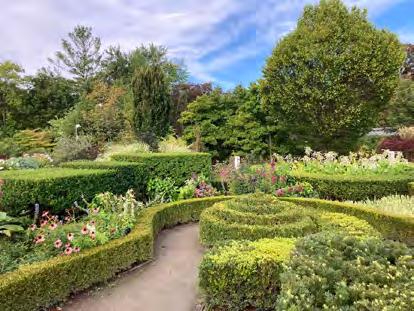
By TTC: From Eglinton subway station take the 51, 54, 54A or 162 bus to Lawrence Avenue East and Leslie Street. The TBG is on the southwest corner.
Find us on...
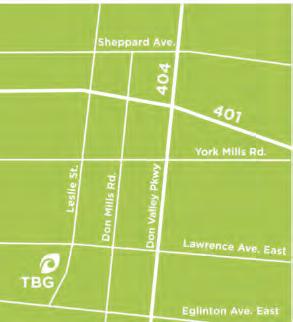











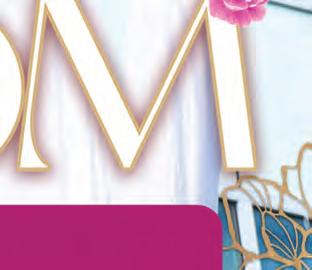






JULY 10, 11 & 12 | 2PM & 7PM | JULY 16, 18 & 19 WWW.TORONTOBOTANICALGARDEN.CA 777 LAWRENCE AVENUE EAST, TORONTO M3C 1P2 AT THE TORONTO BOTANICAL GARDEN APEVENTS.CA ENTER A MAGICAL GARDEN FILLED WITH GNOMES & FAIRIES GET YOUR TICKETS: AP_Bloom_JULY2023_Posters.indd 2 2023-05-03 10:57 AM





























 By Jean McCluskey
By Jean McCluskey













 By Leanne Burkholder
By Leanne Burkholder

































 1
1. Thunbergia Sunny Rose new for 2024
2. Solar Tower Black Ipomoea
3. Beacon Impatiens Portland Mix and White
2
4. Thunbergia Arizona Glow
5. Solar Tower Green Ipomoea
6. Beacon Impatiens Sanibel Mix and Orange
1
1. Thunbergia Sunny Rose new for 2024
2. Solar Tower Black Ipomoea
3. Beacon Impatiens Portland Mix and White
2
4. Thunbergia Arizona Glow
5. Solar Tower Green Ipomoea
6. Beacon Impatiens Sanibel Mix and Orange



















 By Leanne Burkholder
By Leanne Burkholder
 Balcony in Bloom
Bee on yellow hyssop Balcony in winter Ryan Godfrey, centre
PHOTOS: RYAN GODFREY
Balcony in Bloom
Bee on yellow hyssop Balcony in winter Ryan Godfrey, centre
PHOTOS: RYAN GODFREY

























































